6 Imperialism
Land-Based Empires

Industrialization was the impetus undergirding the expansion of empire in the nineteenth century. By the close of the nineteenth century, land-based powers in Europe and America were seeking to expand their empires overseas—using nationalism as the guiding principle—to establish colonies on the continents of African and Asia. Even if the empire chose not to actively settle citizens within the occupied lands—such as was the case with British “settlements” in South Africa, Australia, or New Zealand—they would still practice imperial rule. In several European kingdoms (such as France, Serbia, Hungary, and Germany), nationalists supported political uprisings and revolutions. Citizens rejected the existing monarchies and, in some cases, portrayed their nationalist resistance as couched within the rhetoric of resisting foreign rule. Post-revolution, as each country sought to create new governmental structures, the construct of a national identity was one way to unite the people behind leadership amid upheaval. One consequence of these new emerging identities was the assumption of cultural supremacy, which motivated the desire to expand the geographical borders, spread these cultural practices to populations that had not yet come to follow them, stimulate the economy, and demonstrate superiority over “lesser” territories.
In post-Enlightenment Western Europe, monarchies were challenged and overthrown. In Eastern Europe and Russia, the constant threat of uprisings forced the royalty to abolish serfdom. The United States had been founded and governed without a monarchy—but with elected officials—guided by the precepts that birthright, sovereignty, and religious affiliation were no longer the sole precursors to land ownership, wealth, or political power. Before the end of its second century in existence, America plunged into a civil war. As discussed in chapter 5, businesses such as the English East India Company influenced the passing of laws in the British Empire. In Qing China, the Ottoman Empire, the Russian Empire, and the Japanese Empire, reforms were all introduced by imperial officials who sought to quell proto-nationalist unrest as well as repel the growth of influence from the empires of the United States and Western Europe.
By the dawning of the twentieth century, the expansion of empire was less a political maneuver for global domination than a quest driven by the economic forces of capitalist business ventures yet implicitly endorsed by existing monarchies. Europe, Russia, and America’s economies were prospering as a result of being in political control of the majority of the earth’s population.
During the transition from the early modern to modern historical epochs, empires in possession of superior weapons, technologies, and economic resources invaded regions that were rich in natural resources yet struggling in other ways. A number of factors could weaken a once thriving civilization, ripening the region for external conquest: a failing economy, the threat of invasion from a series of kingdoms, the depletion of the indigenous population from disease, or raids to capture and enslave. European explorers were given carte blanche by the reigning monarchies and the papacy to negotiate trade agreements exploiting the country in need of assistance. Typically, the trade agreements contained caveats and loopholes that allowed the traders to wield influence in getting laws passed to lower tariffs and trade restrictions, protect them from prosecution, give them control over the educational systems, and instill cultural markers (such as language requirements) as a requirement to conduct business.
The difference between colonial and imperial rule can be measured in terms of occupation: Colonial policies required citizens to move from the mother country and build communities within the acquired territories. The expectation was that the mother tongue would replace the indigenous languages, while the social institutions and practices, cultures, and religions of the indigenous populations would disappear as they were assimilated into the culture of the empire. The intention was to replicate “home” in every aspect except climate, styles of dress, schools, and laws. The indigenous peoples were sublimated to second- and third-class citizenship, if they were recognized as citizens at all. Indigenous peoples were commonly excluded from attending schools, securing jobs, serving as elected officials, working in administrative positions, and living near the colonists. Land was taken from local families and distributed to colonial settlers. Outside of menial positions, local citizens were prohibited from progressing within the companies that provided the majority of employment and were unable to attend schools founded by the colonists unless they could prove religious conversion. However, often, members of the native community were prohibited from attending school en masse.
The modern re-envisioning of imperialism was often portrayed as a less invasive form of control than colonialism: one “country” (the empire) simply lending another “country” (the de facto, if not actual, imperial possession) assistance through military, economic, or political support while in reality also including the drafting of policy that favored the imperial core. Historically, imperial rule evolved out of one polity invading and conquering another and staying long enough to establish new laws, military presence, and tax structure. Once installed, the dominant powers would often withdraw, leaving military and civil administrative outposts to collect taxes or trade-tribute. The customs, languages, and social practices of indigenous populations would remain largely intact; however, elected officials were often determined, or at least approved, by the empire, as were educational curriculum and religious leanings. Land was taken from local families and redistributed to those who had government appointments, but populating the region was not the final goal.
Consider the decline of the empires we’ve already become familiar with in earlier chapters in Asia, Africa, and Europe. They were territorial empires that had used military conquest to impose political control over wide expanses of land adjacent to their ancestral homelands. They existed by providing a degree of civil and economic order in exchange for taxes on the agricultural produce of the agrarian populations they conquered. These empires usually left their subjects more or less alone to speak their own languages, practice their own religions, and observe their own cultural traditions—with some notable exceptions, such as those that imposed Christianity in Europe. Additionally, they often captured labor from conquered lands and even occasionally conscripted labor into their militaries, like the Janissaries of the Ottoman Empire.
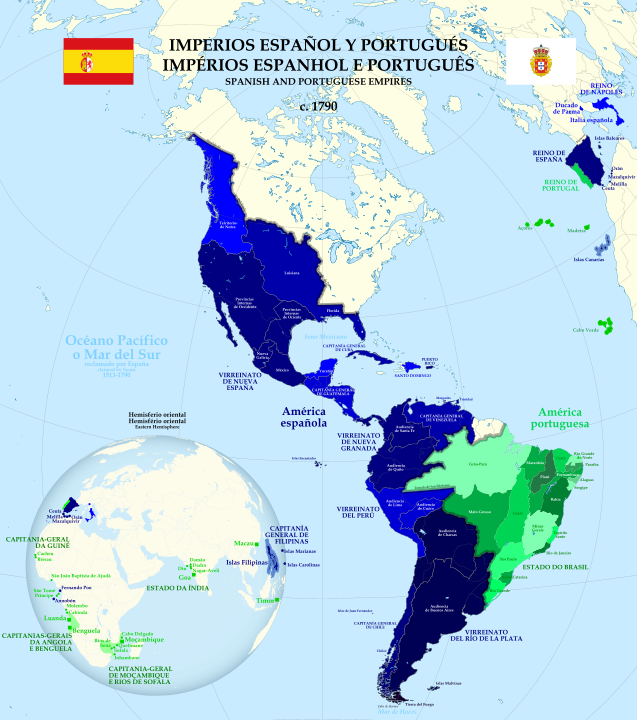 The Portuguese and Spanish began establishing the first European overseas empires in the Azores and Canary Islands in the late 1400s, extending their overseas empires into the Americas after 1492. In the process, the Spanish defeated several land-based indigenous empires, kingdoms, and polities—including those occupied by Taino, Aztecs (Nahuatl), Inca, and Maya peoples—replacing local rulers with Spanish viceroys.
The Portuguese and Spanish began establishing the first European overseas empires in the Azores and Canary Islands in the late 1400s, extending their overseas empires into the Americas after 1492. In the process, the Spanish defeated several land-based indigenous empires, kingdoms, and polities—including those occupied by Taino, Aztecs (Nahuatl), Inca, and Maya peoples—replacing local rulers with Spanish viceroys.
In 1494, Spain and Portugal negotiated the Treaty of Tordesillas—as decreed by Pope Alexander VI (Rodrigo Borgia)—effectively dividing the Americas in half and awarding the land from Cape Verde off the northern coasts of Africa to Brazil in South America between the governments of the two kingdoms. The treaty was drafted in response to the Portuguese monarchy’s response to the Spanish Crown sponsoring Christopher Columbus’s expeditions to ensure that Portugal did not claim land previously claimed by the Spanish.
One stipulation of the treaty was that land governed by a “Christian King” would not be colonized. This caveat allowed the invasion and conquest of any lands not governed by such. The treaty did not consider including other European nations such as England, France, Germany, or Russia partially because these countries had not made significant inroads into exploration in the Americas.
![Library of Congress: https://www.loc.gov/rr/hispanic/guide/hs046001.jpg; Descripción de las Yndias Ocidentalis [printed map]. In Antonio de Herrera y Tordesillas. Description des Indes Occidentales. Amsterdam: M. Colin, 1622; found on this page: https://www.loc.gov/rr/hispanic/guide/iberia.html This map describes the extent of Spanish possessions in America. The 1494 lines of demarcation, agreed upon by Spain and Portugal as a result of the Treaty of Tordesillas, divide America from Europe on the east and from Asia on the west.](https://louis.pressbooks.pub/app/uploads/sites/18/2022/05/hs046001.jpg)
The Treaty of Tordesillas proved to be devasting to the indigenous peoples, and their populations were decimated by invasion, enslavement, and exposure to diseases. Indigenous cultural practices were prohibited, conversion to Christianity was violently enforced, and Spanish was implemented as the “national” language. Land grants were awarded to nobility to establish settlements, with the understanding that taxes were to be paid to the king and tithes to the Catholic Church.
The British, French, Dutch, and others soon followed the Iberians into the Caribbean and North America. All the European colonies in the Americas were controlled by their respective “mother” countries, sending resources like silver and gold and agricultural products (especially sugar) to Europe, and often required to trade only with the “mother” economy. As we will see, Europeans continued this model of overseas empires in the 1800s as Africa and parts of Asia came to be dominated by outside imperial powers.
An early form of economic “neo-imperialism” (discussed in a later chapter) also appeared in the 19th century, especially in the new republics of Latin America. In this case, supposedly independent countries that had recently won their independence from the Spanish and Portuguese empires were economically dominated by European and U.S. investors and still providing raw materials to the “Great Powers” in exchange for finished industrial goods. Subsequent chapters will further discuss how nearly all of these new nations became indebted to European banks and faced the humiliation of “gunboat diplomacy” in which U.S. and European powers took over custom houses to force the payment of loans.
Before World War I, the decline of land-based empires was nearly complete, while overseas empires flourished.
Questions for Discussion
- Why would a shift from land-based to overseas empires be a significant change? How would such a change affect history?
Declining Land-Based Empires
The majority of land-based empires in Europe began a precipitous decline after the Napoleonic wars, some sooner than others. Nationalism, as an ideology, presented a challenge in some of the larger multi-ethnic empires. Members of distinct cultural, religious, and linguistic groups began to demand more autonomy within these empires, which increasingly led to the establishment of independent nation-states. In other cases, empires that resisted change were conquered by powerful nations expanding their overseas empires. Often these factors combined to challenge land-based empires.
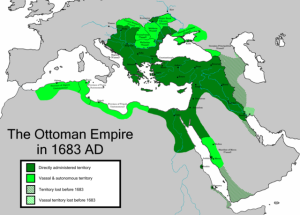 The Ottoman Empire’s wealth and power are often considered to have shown significant decline during the 19th century. So much so that the area geographically located near modern-day Turkey was called “the Sick Man of Europe.” This dismissive label ignored that the vast majority of the wealth of the Ottoman Empire was located in Africa and Asia, even during a period when the Ottomans would lose control of Egypt to expanding British influence. Nonetheless, the Ottomans were able to sustain their colonies until World War I. The Sunni Muslim Ottoman homeland was present-day Turkey, which was a close neighbor of Orthodox Christian Russia to the north, the Catholic Habsburg (Austro-Hungarian) Empire to the west, and the Shiite Iranians who succeeded the Safavid Empire in Persia to the east. The Russians aided the Orthodox Greeks, Serbs, and Bulgarians in their successful struggles for independence. The Ottoman capital, Istanbul, had been Constantinople, home of the Byzantine Empire and of Greek Orthodox Christianity before the Ottoman conquest of 1453, and the leaders of Russia who were influenced by the Slavophile movement—a movement that offered a Russian-centric vision of Pan-Slavism and Pan–Eastern Orthodox identity—wanted to reestablish Christian rule there.
The Ottoman Empire’s wealth and power are often considered to have shown significant decline during the 19th century. So much so that the area geographically located near modern-day Turkey was called “the Sick Man of Europe.” This dismissive label ignored that the vast majority of the wealth of the Ottoman Empire was located in Africa and Asia, even during a period when the Ottomans would lose control of Egypt to expanding British influence. Nonetheless, the Ottomans were able to sustain their colonies until World War I. The Sunni Muslim Ottoman homeland was present-day Turkey, which was a close neighbor of Orthodox Christian Russia to the north, the Catholic Habsburg (Austro-Hungarian) Empire to the west, and the Shiite Iranians who succeeded the Safavid Empire in Persia to the east. The Russians aided the Orthodox Greeks, Serbs, and Bulgarians in their successful struggles for independence. The Ottoman capital, Istanbul, had been Constantinople, home of the Byzantine Empire and of Greek Orthodox Christianity before the Ottoman conquest of 1453, and the leaders of Russia who were influenced by the Slavophile movement—a movement that offered a Russian-centric vision of Pan-Slavism and Pan–Eastern Orthodox identity—wanted to reestablish Christian rule there.
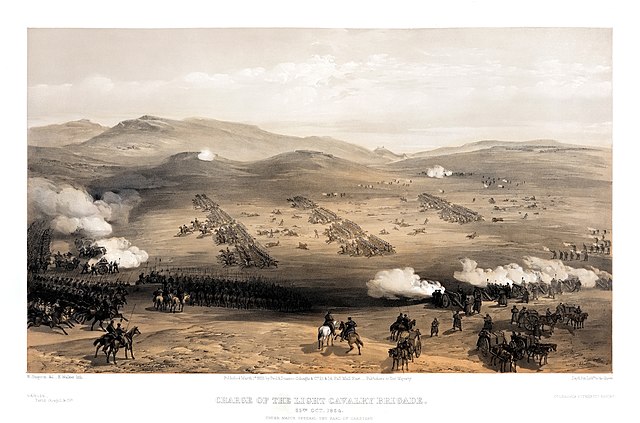
The Greeks were the first to successfully free themselves from Ottoman rule in the 1820s. They found support not only from Imperial Russia but also from the British and French, who sought more economic and political influence in the Eastern Mediterranean. The struggle for Greek freedom invoked the memory of Greece as the birthplace of democracy and home of classical literature and art. Hence, Greek nationalism also fired the imagination of the artists and writers of the “Romantic” movement then flourishing in Europe. English poet Lord Byron lost his life in service to the Greek cause.
By the mid-19th century, disputes among European powers over what would happen to Ottoman territory caused the Crimean War (1853–1856), in which France, Great Britain, the Italian Kingdom of Sardinia, and the Ottomans opposed an expanding Russian Empire. The Crimean War was the first major war of the Industrial Age, featuring technology in the form of railways, telegraphs, and modern ordnance such as rifles and exploding naval artillery. Disastrous mismatches between traditional military tactics and the realities of modern war occurred, such as the incident immortalized in Alfred Tennyson’s poem “The Charge of the Light Brigade.” The poem describes a frontal assault by a British light cavalry unit armed only with lances and sabers against an artillery battery dug in on high ground at the battle of Balaclava in 1855. Although Tennyson’s poem praises the bravery of the cavalrymen who charged through the so-called Valley of Death, events like these became symbols of the logistical and tactical mismanagement of the war effort. The conflict also revealed the weakness of the Russian Empire, which fielded large armies but lagged in both tactics and technology. In the treaty following the war, Russia was forced to remove its naval fleet from the Black Sea.
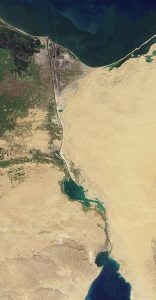
The Ottomans also faced an ongoing dispute with Egyptian leaders, who gained practical independence under the Ottoman-appointed governor Muhammad Ali from 1805 to 1848. Ali modernized Egypt in many ways, while his son, Muhammad Sa’id, granted a land concession in 1854 to French businessman Ferdinand de Lesseps to dig a canal from the Mediterranean to the Red Sea. The building of the Suez Canal, completed in 1869, was initially opposed by Great Britain because they feared its control by the French would shift the balance of power in Europe. The canal took eleven years to build, using forced Egyptian labor. Although the Suez Canal Company was an international corporation, its shares did not sell well outside France and Egypt. But in 1875, Sa’id’s son Ismail put Egypt’s shares up for sale, and British Prime Minister Benjamin Disraeli bought the shares on behalf of the British Crown. Although France still owned more shares, Britain sent troops to protect the canal during the Ottoman Restorationist and proto-nationalist Urabi Revolt (1879–1882) and in 1888, the canal was declared a neutral zone under British protection. Using the canal, British steamships were able to avoid sailing around Africa and reach India in two weeks instead of two months.
Inspired by the example of the Greeks and encouraged by the Russians and others, Montenegro, Serbia, and Bulgaria achieved nearly complete independence from the sultan in Istanbul by 1878. Although they belonged to distinct ethnic and linguistic groups, the majority of people in these territories were Orthodox Christians. However, as we will see in the next chapter, these new countries had trouble resolving disputes over borders and political control, since the different peoples lived all over the region in villages and towns that were frequently “majority-minority.” Nationalism was the motivation for independence, but the national community existed across many frontiers. How should they be united? And what should be done about the “other” living within one’s own country?
Questions For Discussion
- Why were Englishmen like Lord Byron so supportive of Greek independence?
- What does the Charge of the Light Brigade tell us about the changing nature of warfare?
- Why is the Suez Canal so significant?
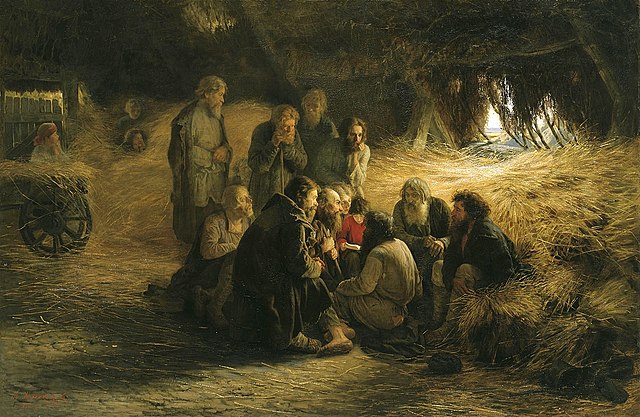
When the Russian Empire’s ambitions were thwarted in the Crimean War, Russian thinkers of the Slavophile movement critiqued their military as incompetent and socially inept. Even as Peter the Great had abolished slavery in 1723, the social status of previously enslaved people was converted into serfs. Furthermore, the system of serfdom tied peasants and their families to land owned by the nobility and elite. While they did not have the legal designation of chattel, serfs were still included in any property transaction among the landed gentry. However, due to social pressures, Tsar Alexander II declared an end to serfdom in 1861, shortly before President Lincoln’s 1863 Emancipation Proclamation during the U.S. Civil War. Both countries were among the last in their respective regions to formally end forced labor obligations, and like the newly “freed” in the U.S., the liberty of many former Russian serfs existed only on paper. Hence, persistent inequities in the Russian Empire inspired virtually continuous attempts to either reform or abolish the monarchy.
In the 19th century, Russian industries expanded with investment from Western Europe: factories and rail networks soon appeared, especially in the European part of Russia. However, seeing limited evidence of political and social change led to frustration among potential reformers, who instead turned to revolutionary action, often led by anarchists. Acts of anarchy had been relatively sparse in France, where the term originated, but grew more popular in Eastern Europe, especially in societies where there had not been an initial overthrow of the monarchy. Anarchists were similar to socialists in that they emphasized the concept of class struggle. However, while socialists were more popular in urban areas, anarchists picked up on a pre-existing emphasis in Russian—along with Ukrainian, Polish, and Austro-Hungarian—societies on communal agrarianism. The anarchist vision promoted a radical form of local decision-making by consensus and communal councils. They found religious institutions and imperial police inherently repressive and sought to abolish them. Further, they argued that the parallel institutions of imperial government and police in the rest of Europe were oppressive. To address these problems, anarchists proposed adopting a plurality of tactics, ranging from local mutual-aid organizing to provide food to the impoverished to the assassination of royalty and imperialist political leaders. In their efforts, anarchists often co-mingled with socialists, and many anarchists also considered themselves socialists. However, as the socialist movement evolved, anarchists tended to oppose the revolutionary communist faction, especially since they argued that the revolutionary society of the Soviet Union introduced new forms of oppression.
Russian anarchists succeeded in assassinating the reformist tsar Alexander II in 1881. Various anarchists also assassinated other imperialists, including Elisabeth, the empress of Austria, in 1898; Umberto I of Italy in 1900; and the American president William McKinley in 1901. Alexander II’s son, Alexander III, rejected previous political reform proposed by his now-deceased father in an effort to cling to power; he, in turn, was also murdered by anarchists in 1894. His son, Nicholas II, was not open to any checks on his absolute power, although his power would in turn be checked by the Russian Revolution.
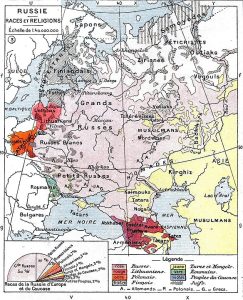
Dozens of ethnic and religious groups lived in the territories of the Russian Empire; attempts at “russification” were inconclusive. The Poles, Finns, Lithuanians, Ukrainians, and Romanians, among many others, chafed under the autocratic rule of the tsars and desired independence—or simply immigrated to the U.S. for better economic opportunities. Ashkenazim Jewish Russians, many of whom lived in “the Pale of the Settlement”—territory taken from Poland in the 1790s, Belorussia, and Ukraine—were blamed for misfortunes. Most often, these “misfortunes” were politically linked. In one instance, the execution of the Greek Orthodox patriarch in Constantinople resulted in the 1821 pogrom in Odessa, as Jews were blamed for the politics of the time. The assignation of Alexander II resulted in a similar pogrom in Russia, as Ashkenazim were viewed as “agents of foreign influence.” Jews were also blamed for local economic conditions, and the tendency for some Jewish activists to be involved in labor organizing provided local imperialists with a scapegoat population. Russian imperialists used everything from bad harvests to the deaths of babies or cattle to stoke anti-Semitism. The hatred resulted in a wave of pogroms during the 1880s and especially between 1903 and 1906.
Jewish responses to the brutal violence of the pogrom were varied. Some advocated the re-imaging of Zionism—the concept of a return to Israel—as an increasingly nationalist idea, advocating for the creation of a Jewish nation-state. Others simply fled, resulting in influential migrations of Ashkenazim to the German states, France, and the United Kingdom. These migrations also resulted in immigration to the United States, Argentina, Brazil, Mexico, and Canada. A third response was to organize self-defense, as the socialist Jewish Labor Bund did from their organizational bases in Vilna (now Lithuania), Lodz (now Poland), as well as parts of what are now Ukraine, Belorussia, and Russia. The were a leading force in the 1905 Russian Revolution and organized armed defense during the 1905 Odessa pogrom, in which hundreds of Jews (est. 400) were brutally murdered by ethnic Russians, Ukrainians, and Greeks. The Odessa pogrom would then receive international condemnation and was presented as proof of tsarist Russia’s backwardness.
In the late 19th century, the tsarist autocracy encouraged anti-Semitism, the idea that Jews were the cause of political, economic, and social problems and needed to be controlled and occasionally “put in their place” in violent pogroms. Although Jews had lived in the region for centuries, they were considered an “other,” and the tsars restricted their ability to own land and to exercise certain professions. Local and national leaders blamed the Jews for every assassination and economic downturn in order to unite opposition groups with the goals of the tsars. Attacks on Jewish communities and neighborhoods (pogroms) occurred with frightening frequency from the 1880s until the eve of World War I.
Questions for Discussion
- Why was Tsar Nicholas II unwilling to consider any checks on his absolute authority?
- How did the large numbers of different ethnicities, languages, and religions in the Russian Empire create difficulties for the tsarist government?
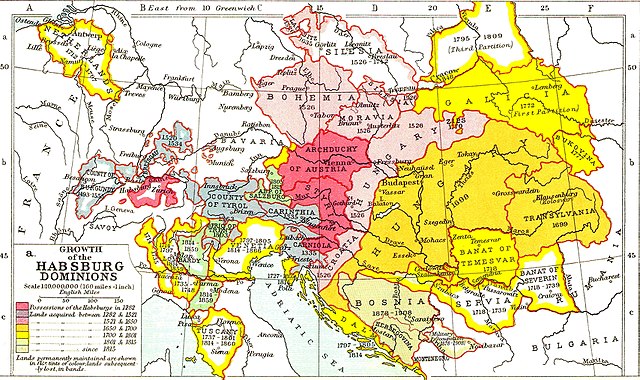
The Habsburg dynasty had ruled Austria and its territories since the late 1200s; through strategic marriages, the family also controlled the Spanish Empire in the 1500s and 1600s, including the Spanish-American colonies. Although the Spanish line died out in 1700, the Austrian House of Habsburg would reign until 1918.
At the end of the Napoleonic period, the Habsburg Empire dominated southeastern Europe, up to the frontiers of the Ottomans and Russians. While the tsars felt a special kinship with Orthodox Christians under Turkish rule—Greeks, Serbs, and Bulgarians—the Habsburg monarchs supported Catholics of the Ottoman region, like the Croats. Until 1815, the Habsburgs claimed to be the Holy Roman emperors; during the Protestant Reformation, they fought to maintain Catholicism as the official religion of their realm.
Although theoretically united by religion, the Habsburg Empire was divided by a growing sense of nationality and religious diversity. German-speaking Austrian Habsburg emperors ruled Hungarians, Czechs, Ukrainians, Poles, Slovaks, Romanians, Ashkenazi Jews, Slovenes, Croats, Serbs, and Albanians. By the middle of the nineteenth century, many of these peoples wanted their own nations. The revolutions of 1848 came close to breaking up the Habsburg territories in a wave of anti-monarchist, nationalist, and socialist popular sentiment. While the revolutionaries did not achieve all of their goals, the pressure forced the abolishment of serfdom, several regions gained a greater degree of autonomy, and Emperor Ferdinand I abdicated in favor of his nephew Franz Josef.
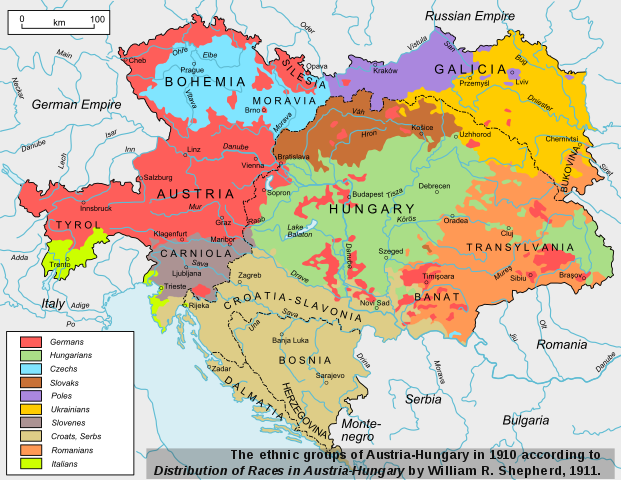
The unification of Italy in the 1860s and Germany in 1870 allowed the Hungarians, who became the most numerous minority within the realm, to achieve near-complete independence. In 1867, the emperor agreed to establish a “dual monarchy,” creating the Austro-Hungarian Empire. Administration was divided between Austrians and ethnicities in the Austro-Hungarian Empire in 1911. There was the Hungarian parliaments, while the Austrian emperor managed foreign policy. This compromise merely spread out the nationalist problem for two kings instead of one: Romanians demanded more autonomy from the Hungarian administration in Budapest, while the Czechs asked for the same from the Austrian government in Vienna.
Questions for Discussion
- What was the main factor uniting the Austro-Hungarian Empire?
- What were the factors fracturing the unity?
A united Germany, achieved in 1870, brought together an agricultural east and southeast with an industrialized west, creating an entirely new “Great Power” in Europe to rival Russia, Austria-Hungary, Great Britain, and France. The new nation called itself the German Empire (Deutsches Reich); its ambition to take a place at the table of imperial powers upset the post-Napoleonic European balance of power and, eventually, became a cause of the two twentieth-century world wars.
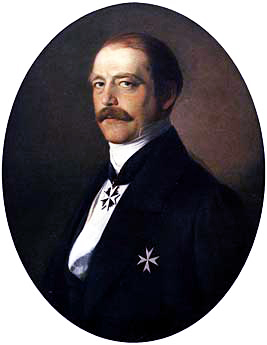
Otto von Bismarck, who had become prime minister of the Kingdom of Prussia in 1862, was the main architect of the German Empire. Although he was not among the young Germans who had dreamed of unification during the revolutions of 1848, Bismarck gradually came to the conclusion that to counter Austria-Hungary, which was overextended in Italy and in its ambitions in the Balkans, Prussia had to take the initiative and gather the German states under the Prussian king. Bismarck used war as a way to unite the German principalities. First, in 1864, he started a brief war with Denmark that brought together most of the northern German states as allies of Prussia. A war with Austria in 1866 solidified these states in a confederation with Prussian King Wilhelm I, while at the same time, the newly unified Italy took advantage of a weakened Austria to claim Italian-speaking Hapsburg territories.
To bring in the mostly Catholic southern German states (led by Bavaria), Bismarck offended Napoleon III of France, making territorial promises in the Austrian war that he did not keep with the French emperor (among other transgressions). When the nephew of Napoleon Bonaparte, who had been president of France before declaring himself emperor, went to war with Prussia in 1870, he counted on the neutrality of the other German states and on Austrian help, neither of which happened.
Prussia had one of the best-trained armies in Europe and surprised the French with their rapid advance. Within weeks, they had captured Napoleon III himself. A leaderless France could not halt the united German advance, and the capital, Paris, was taken over by a feminist, anarchist, and socialist-inspired commune. The French agreed to territorial losses as they formed a Third Republic to replace Napoleon III. In early 1871, Bismarck initiated a gathering of the German princes at the French royal palace in Versailles, outside Paris, to join together as a new unified national state, with the Prussian King Wilhelm I as emperor.
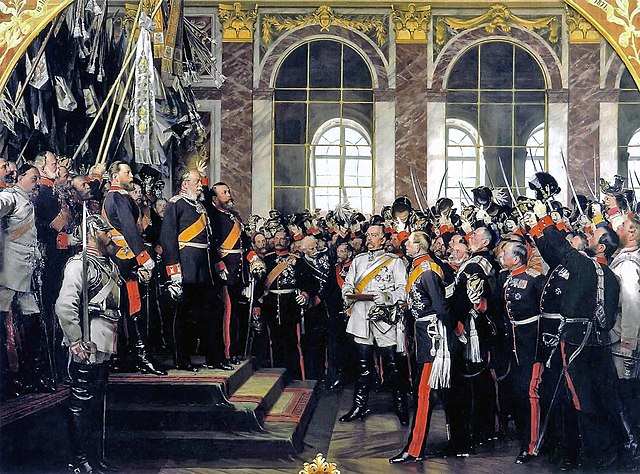
A German empire created a new dynamic in diplomatic relations, based on French and German antagonism, forming new alliances and altering previous arrangements. The Franco-Prussian War was the first of three major conflicts between the French and the Germans over the next 75 years in which millions would die—but one can take heart in the idea that in more recent decades, the two countries have become strong allies, forming the primary economic and political relationship of the current European Union.
Questions for Discussion
- Was Germany justified in its desire to become a “Great Power” like Britain and France?
Rising Overseas Empires
Even though the British North American colonies achieved independence and became the United States, Britain held on to Canada and retained control of islands in the Caribbean, while (as described below) London’s bankers and British industry would strongly influence the economies of the new Latin American republics.
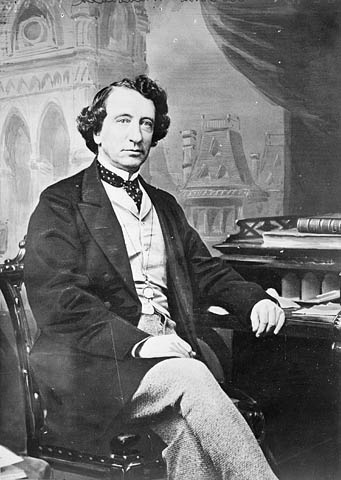
Unlike the Thirteen Colonies, Canada achieved its independence from Britain much more slowly, without a revolution. Although the French-speaking Quebecois and the British in Ontario could easily have been at each other’s throats, anxiety over an invasion from the United States (which was tried unsuccessfully in 1775 and 1812) held a fragile alliance together. After two more incursions by American forces in the 1830s, the British North America Act of 1867 created the Dominion of Canada by combining Quebec, Nova Scotia, Ontario, and New Brunswick. John A. MacDonald became the nation’s first prime minister in 1867, negotiated the purchase of the Northwest Territories from the Hudson’s Bay Company in 1869, and convinced Manitoba, Prince Edward Island, and British Columbia to join the dominion. MacDonald knew that, like the U.S., Canada’s eastern and western coastal regions needed a transcontinental railroad to bind them together.
The Canadian Pacific Railroad was completed in 1885. The C.P. Railroad operates mostly just north of the border, although several lines connected to U.S. cities such as Minneapolis, Milwaukee, Detroit, and Chicago. Today, 90% of Canada’s 36 million population live within 100 miles of the U.S. border, in part as a result of the growth of industry at Canada’s rail hubs and in part as a result of the growth of Toronto (in Ontario) and Vancouver (in British Columbia) as major ports.
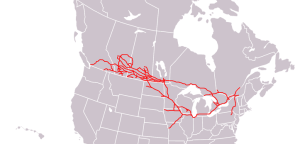
The British had also claimed Australia, which they invaded in the late 18th century, relying upon the export of convict labor to support their colonialist endeavors. Most of the crimes were petty or related to debt, while some were political, such as the Irish condemned for protesting English rule. New Zealand was primarily colonized in the early 19th century through a private company, following the model established in the colonization of some of the Thirteen Colonies. In both cases, the indigenous peoples lost land in much the same manner as in British North America (i.e., the United States and Canada). In Australia, the vast continent allowed for the aborigines to retreat until the limitations of the habitability of the inland desert and an ever-expanding colonialist mission brought them into increasing contact with the settlers and their descendants. In New Zealand, relations between the native Maori and the settlers followed a pattern similar to those of the western United States and Canada: treaties made, treaties broken, and wars fought and won by the settlers, who took more land. However, respect toward and celebration of Maori rights and culture have become integral to New Zealand’s identity in recent decades.
British India—composed during various points of history of what is now Afghanistan, Pakistan, India, Sri Lanka, Bangladesh, and Myanmar—was the most important colony for the British, determining much of its international diplomacy until after World War II. When the British East India Company began its conquest of India in the 1700s, the Mughal Empire was entering a long period of decline after its peak in the 16th and 17th centuries. The company took advantage of the empire’s weakness to expand its trading activities and slowly took over the regional principalities that split off from Mughal control. By the 1700s, Indian tea had become an important part of the British diet—even for their colonists in North America, who dumped Indian tea into the Boston Harbor in protest against taxes on the product in 1773. By the middle of the 19th century, the company controlled most of mainland India, Pakistan, Burma, and Bangladesh as well as Sri Lanka. The company shifted its policy away from simply trading and began reorganizing the Indian economy, clearing forests and establishing widespread cultivation of tea, coffee, cotton, rice, and opium for export, especially to the empire of the Qing in China. However, in 1857, a massive uprising against company rule spread across India. Using the so-called Great Rebellion (1857–1859) as a precedent, British forces established direct colonial rule and formed the “British Raj” in 1858. Attempting to diminish the widespread nature of anti-British revolutionary sentiment, British officers dubbed the revolution the “Sepoy Mutiny,” a term that has remained prevalent in propagandistic presentations of the history of the British Empire ever since. As the Mughal Empire had already established an early form of proto-industrialization in their lands, including supporting advancements in the textile industry, the British Empire quickly became reliant on Indian products and innovations for the growth of industrialization in Europe.
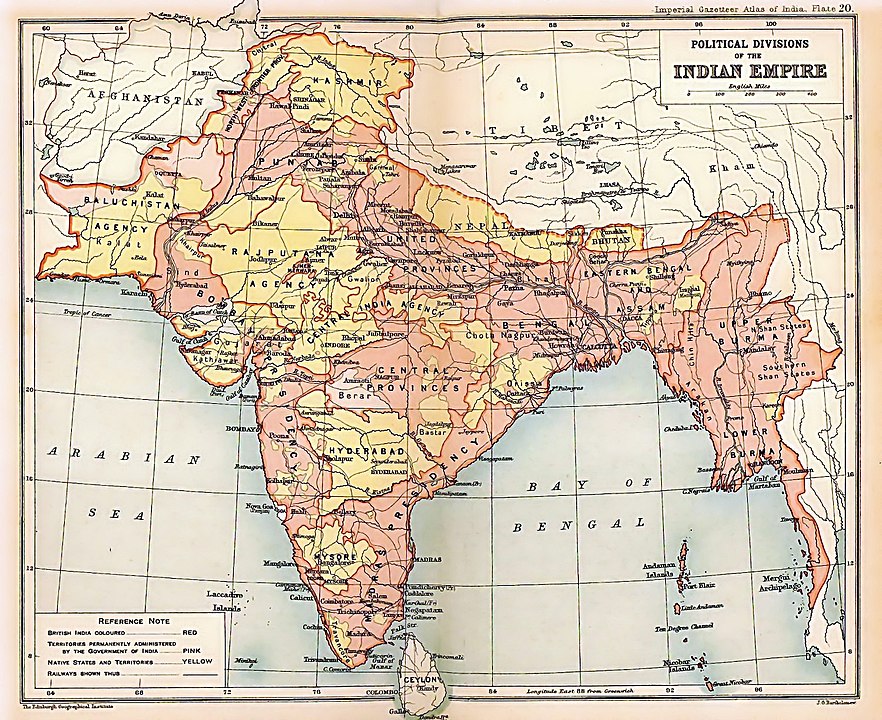
By the mid-19th century, the British in India had established an imperial model that had proved lucrative for investors: the colony provided raw materials for textiles, luxury items, and other industries for the consumers of the “home country,” and South Asians purchased mass-produced textiles and other goods from British factories as a “captive market.” This closed economic system was attractive to both older and newer European empires—setting off, as we shall see, a scramble for colonies in Africa in the late 19th century and a pattern of economic exploitation that would influence informal imperial dynamics as well, such as the U.S. relationship with much of Latin America throughout the 20th century.
The British administration of India, however, also provided a model for other European imperialists. Clearly, the tiny island kingdom could not direct all of the affairs of their Indian possession; trained locals needed to aid in governance. This process began under the East India Company with the formation of an Indian army and police forces, where South Asians provided the labor, fought, and died—all under the command of British officers. It also soon included educated local administrators who spoke English and understood and applied imperial laws and edicts. By the 1850s, the British had founded their first schools to instruct the local elite in English, engineering, science, and British imperial law. This model proved so effective in India that Indian immigrants often followed the British to their new colonies in Africa or the Caribbean. Frequently, as these colonies developed, Indians operated the railways and postal service, and Indian carpenters and bricklayers constructed government offices and private homes for the new colonial political and commercial elites. Indian shopkeepers played an enormous role in the local economies of these new colonies well into the 20th century. Indians also migrated to Great Britain’s territories in the Caribbean as indentured servants or as corvée or “coolie” labor—in Guyana, in northern South America, over 40% of the population is of “India-Indian” descent.
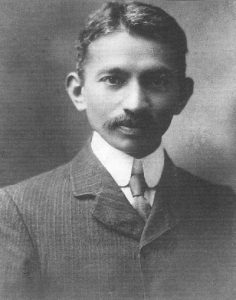
The story of Mahatma Gandhi, who later helped lead India to independence, is an example of a native trained to manage the empire. After an education in a British school in India, Gandhi went to London and studied law. Upon graduating, he went to South Africa to serve the British Empire as a lawyer for twenty-five years before beginning a new career advocating for Indian independence. This, too, was a pattern duplicated in other European empires: eventually, educated local elites and professionals would begin to demand greater autonomy, if not outright independence, since they were already administering the colonies for the “mother country.” Ho Chi Minh, who would fight with and then against U.S. forces for the independence of Vietnam, applied for admission to the French academy in Marseilles that trained imperial administrators. However, they did not accept him.
Questions for Discussion
- How did the British shift their imperial goals after losing much of North America in the U.S. Revolutionary War?
- Why were natives trained as an administrative class in the colonies a problem in the long run for imperialists?
The United States: Slavery, Expansion, and Civil War
Some of the slave owners among the Founders of the United States thought that slavery would not be a permanent institution in the new country. At the constitutional convention in 1787, they agreed to abolish the slave trade in the U.S. starting in 1808. Many seem to have expected that slavery would gradually disappear. Even the slave owner Thomas Jefferson idealized the independent, self-sufficient yeoman farmer rather than the Southern planter as the hope of American democracy.

However, Eli Whitney’s invention of the cotton gin gave new life to the institution of slavery. Issues such as the infamous “three-fifths compromise” of the U.S. Constitution, in which enslaved people counted as three-fifths of a person for purposes of taxation and representation, became more divisive rather than gradually disappearing. And even in the “free” North, the United States was generally considered a “white man’s country.” Free men of African descent were only allowed to vote in a handful of states by 1860 and were subject to discrimination in jobs, housing, and movement everywhere. Finally, although many whites opposed the extension of slavery into the western territories and even advocated for abolition, they also supported schemes for sending freed blacks “back to Africa.” Liberia, on the west coast of Africa, was “founded” by white abolitionists and free people from the United States in 1820—incongruously naming their capital “Monrovia” for the U.S. president at the time, James Monroe, who was a slaveholder.
Whitney’s invention caused an explosion of cotton planting, which led not only to an expansion of slavery but to a hunger for new land. As had happened in the Thirteen Colonies, white-led settlement came at the expense of the Native Americans. The five “civilized tribes” of the South—the Cherokee, Creek, Choctaw, Chickasaw, and Seminole—were Indians who had embraced Christianity and Anglo-American institutions. They established their own farms and even plantations, published a bilingual newspaper, governed themselves in a bicameral legislature, and even owned black slaves. Nevertheless, they were cast out of the southern states by the Indian Removal Act of 1830 and forced to leave ancestral lands and relocate in Oklahoma, west of the Mississippi River. The “Trail of Tears” for these displaced people was well named: thousands died in the forced march across the South and during their settlement in a completely different environment. Despite treaties, similar processes also occurred in the Louisiana Territory and beyond.
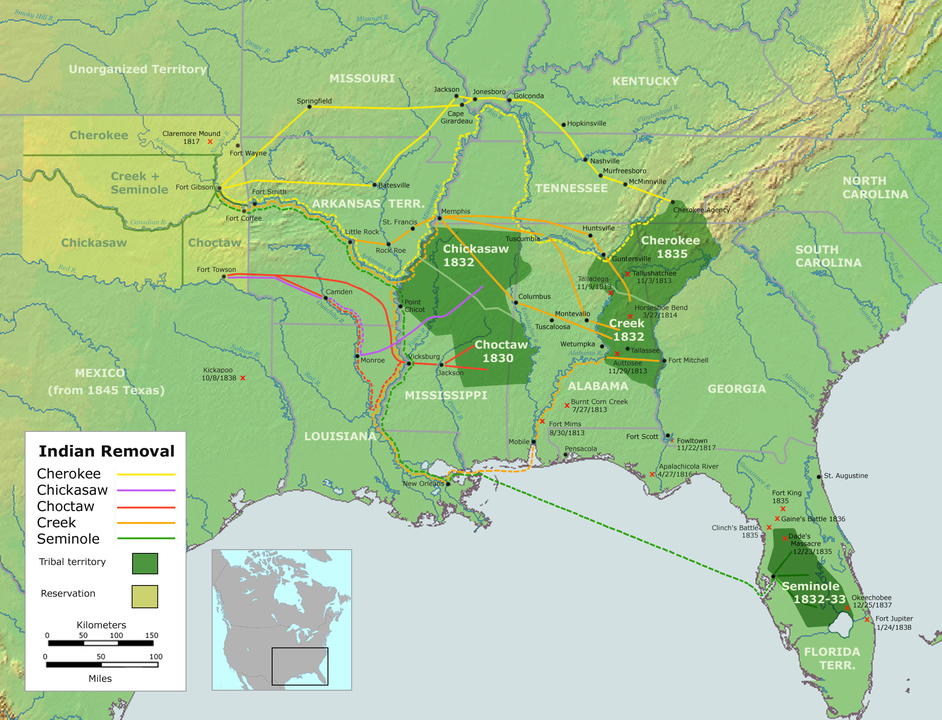
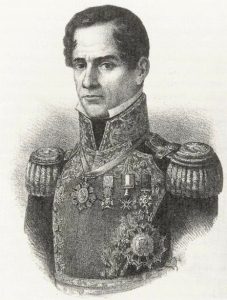
General Antonio Lopez de Santa Anna, former president of Mexico, led Mexican troops into Texas in 1836. He returned to the presidency during the Mexican-American War but couldn’t prevent his nation’s defeat. The territories of independent Mexico north of the Rio Grande River had been only lightly settled by the Spanish. Santa Fe was established nearly one hundred years after the conquest of the Aztecs, and the religious missions in California only appeared in the 1700s. The new Mexican government allowed for “Anglo” settlement from the United States into Texas, which bordered the new state of Louisiana, as a way to begin populating this region. While the Mexican government allowed the “Tejanos” a degree of self-government, they insisted that Mexican laws be obeyed, including the abolition of slavery. The new settlers rebelled, achieved independence after a brief war in 1836, and immediately brought enslaved people to work on cotton plantations.
Although Mexico’s treaty with independent Texas included a pledge that the new republic would not become a state of the United States, Texas did join the union in 1845, and a war ensued. Not only did the U.S. government send troops south to defend Texas; they sent enough to defeat Mexico decisively. Many Americans argued that the United States had a “Manifest Destiny” that required it to become a continental nation. The U.S. Army eventually occupied Mexico City in 1848 and conquered all of the territory to the Pacific Ocean. In defeat, the Mexicans signed the Treaty of Guadalupe Hidalgo and ceded all of their territory north of the Rio Grande River. Mexico lost over half its land area, and the United States acquired California, Arizona, New Mexico, Nevada, Colorado, Utah, and part of Wyoming. At the same time, the U.S. government negotiated a treaty with Great Britain to establish a border in the disputed Oregon territory. By 1849, the United States had completed its advance across the continent.
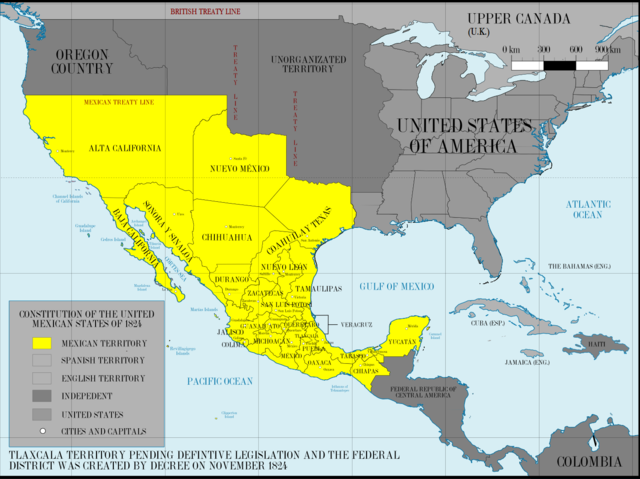
Almost immediately after the Mexicans were defeated, gold was discovered by a U.S. settler in northern California. “Forty-niners” joined the Gold Rush from the eastern states and from as far away as Chile and China. California became a U.S. state the next year. Again, rapid settlement came at the expense of Native Americans. Chinese laborers were soon restricted in their movements. The United States was a “white man’s country,” and they became the first ethnic group explicitly barred from immigrating to the U.S. in the Chinese Exclusion Act of 1882. And finally, the rapid expansion of territory and establishment of new states upended the careful balance between slave and free states that had prevented armed conflict. An escalation of violence in Kansas and increasing political polarization led to the formation of a new political party (the Republicans), the election of a president from this party (former Illinois congressman Abraham Lincoln), and the secession of most of the Southern slave states.
Questions for Discussion
- How did technological progress impact the politics of slavery?
- How do you think the idea of Manifest Destiny held by people in the United States affected our history?
The Civil War, like the Crimean a few years earlier, was one of the first modern wars that brought new technology to the battlefield. Railroads and steamboats made troop transportation quicker and more efficient, while the electric telegraph not only improved military communication but also made war news more immediately available to the newspaper-reading public in the U.S. and abroad. The industrialized northern states benefitted the most from the new technologies, since they could produce more war materiel and get troops to the front more quickly than those of the rebellious, self-proclaimed “Confederacy,” whose army had a distinct disadvantage, as cities in the southern United States had lagged in the development of both industry and railroads because plantation owners piled their assets into the lucrative industry of chattel slavery. The hopes of the political elite of the white supremacist, socially conservative “Confederacy” depended entirely on support from two key powers in Western Europe. Southern cotton supplied the textile mills of Great Britain and France, enriching those countries, and Confederate planters expected these business ties to influence government decisions. However, they were shortsighted in that they lacked control over a real navy, and the Union forces were able to enact a shipping blockade. Furthermore, Great Britain hesitated to recognize the independence of the Confederacy but in the end declined when the Union began racking up victories in 1863. At the same time, Emperor Napoleon III—nephew of the man who had sold Louisiana to Jefferson—pursued an imperial scheme to create a pro-French monarchy in Mexico that would support the Confederates in the name of destabilizing the power of the United States. Although France was a traditional ally of the United States, Napoleon sought to capitalize on the opportunity. However, Napoleon’s plan failed when Mexican troops unexpectedly defeated the French army at the Battle of Puebla on May 5, 1862. Although Maximilian, brother of the emperor, would briefly rule Mexico, the project was a disaster for Napoleon. After the Union victory in the U.S., French troops left Mexico, and Maximilian was executed by firing squad in 1867 as Mexican liberals, led by Benito Juárez, reestablished Mexican independence. The date of the Battle of Puebla is still celebrated as Cinco de Mayo by Mexican Americans throughout the United States, especially in the portions of the United States that were part of Mexico prior to 1848.
Because some U.S. publishers are interested in selling their textbooks to school boards in the former Confederate States, they often soft-pedal the Civil War in a way that creates confusion. So let’s be very clear: It is absurd to claim that supporting slavery was legitimately based on the “sanctity of private property rights” espoused by the U.S. Founding Fathers as part of their Enlightenment values. It is not reasonable to argue that property is a human right, but only for some humans, and that other humans can be property rather than having property rights. Furthermore, the U.S. Civil War was about slavery, while framed in the rhetoric of “states rights,” and was motivated by a very specific “right” that states such as South Carolina claimed in their state constitutions: the right to establish a race-based caste system where Black people were enslaved as chattel. Indeed, when South Carolina was the first state to secede, and other southern states followed suit, each in turn made clear that they were renouncing their status as states in a desperate attempt to preserve the race-based institution of slave labor. Similarly, the prior Texas Revolution was really motivated not by the “Freedom” of Anglos in Texas but by the “freedom” of those Anglos to own enslaved labor. However, during a later period of U.S. history, from reconstruction onward, the terms “northern aggression,” “freedom of property,” and “states rights” became part of a conscious white supremacist project to re-write U.S. history in the late 19th and early 20th century, during a period that was also marked by the conscious construction of Confederate war memorials, including in towns that had not even been incorporated during the brief, turbulent, violent, and failed attempt to establish “the Confederate States of America” (CSA). The white supremacist political project also had dire implications for the history of U.S.–Latin American relations, as much of the U.S. relationship with Latin American states was influenced by leaders who were of the political stripe that supported the CSA. Indeed, even during the Civil War, a U.S. warship had attacked a warship of the self-proclaimed Confederates in Bahia, Brazil, leading white supremacists in Brazil—a country where slavery would only become formally illegal in 1888—to argue that the U.S. had violated Brazilian sovereignty. Although formal relationships remained tense, during the last days of slavery in Brazil, American and British businessmen were capitalizing on the Amazon Rubber boom, which began in 1879. Indeed, as a result of the rubber boom, illegal enslavement and de facto enslavement through debt-bonded labor continued in Brazil.
Questions for Discussion
- What motivates people to argue that the Civil War was fought over something other than slavery?
Neo-imperialism in Latin America
As described in Chapter 4, Latin America achieved independence from Spain and Portugal in the first decades of the 1800s. Great Britain was particularly interested in an independent Latin America as a source of markets for its industrial products, while English and Irish mercenaries, available after the Napoleonic Wars, joined the fight for freedom alongside Bolívar and others in Latin America. The Spanish and Portuguese became the first Europeans to begin losing their overseas empires—nearly 150 years before the British, French, and others would go through the same process. The new countries of Latin America suffered through a long period of struggle to establish stable governments and thriving economies, which, depending on the country, included civil wars, dictatorships, social and political reforms, and economic dependence on a handful of exports and their international price.
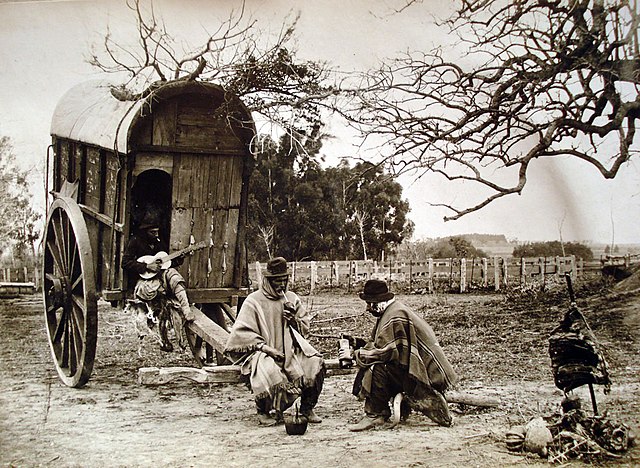
The new countries also were the first to experience neo-imperialism—a “new” imperialism that technically respected national sovereignty but in reality forced governments to bend to foreign influence. In the 1820s and 1830s, the new governments of Latin America quickly became indebted to British banks, which had arranged large loans in anticipation that independence would bring rapid economic development as it had in the United States. Meanwhile, local artisans could not compete with British textiles and other manufactured goods that flooded the markets of the new republics. Many countries became dependent on the international price of a handful—or even a single—export such as copper and nitrates in Chile, coffee in Brazil, beef and grain in Argentina, sugar in Cuba, and bananas in Central America.
British investors in Latin America were followed by French and U.S. businesses. The American president William Howard Taft termed this form of investment “dollar diplomacy,” although as a neo-imperialist model, it continues for much of Latin America in the 21st century. Furthermore, the neo-imperialist economic model was extended to new countries formed in Africa and Asia from the declining European empires after World War II.
Some Latin America countries had more success than others boosting their economies with world trade. Brazilian plantations still produce more coffee beans than any other country, but in the 19th century, more than half of all coffee came from Brazil. But the country’s economy was extremely sensitive to the world price and rate of consumption; and when the occasional frost in southern Brazil damaged the coffee bushes, planters could go bankrupt.

Brazilian coffee also implicated the development of politics and human rights in the country. Brazil was the last country in the hemisphere to abolish slavery. Although the abolishment of slavery in 1888 did not result in a bloody civil war, it was precluded by decades of extremely violent repression, including against the Muslim Malê uprising (itself inspired by the Haitian Revolution) in 1835 and the resistance of hinterland Quilombos settlements of escaped formerly enslaved peoples. Furthermore, the Brazilian martial art Capoeira—which relies on a combination of dance, acrobatics, and music for training—along with other cultural practices that had long symbolized the resistance of enslaved people were criminalized after slavery itself was banned.
In the 18th century, enslaved labor was shifted from declining sugarcane plantations in northern Brazil to silver mining districts in the south. As the mines were beginning to deplete in the late 18th century, planters discovered that coffee grew well in the highlands of southern Brazil, and again, large landowners used enslaved labor to cultivate the bean. The bloody War of the Triple Alliance, in which Argentina, Uruguay, and Brazil fought Paraguay over borders from 1866 to 1870, contributed to the end of slavery. Desperate for soldiers, the Brazilian government offered freedom to enslaved men if they served in the army. Impressed with the ability and dedication of these soldiers, many army officers began to feel that slavery should end in their country. The institution was gradually fading anyway, because coffee cultivation used less labor than either sugar plantations or mines. By 1880, nearly three-quarters of all people of color in Brazil were free. King Pedro II finally abolished the institution in 1888; a year later, he abdicated, and the military organized a republic, although the plantation-owning class remained a major political force in the country.
As noted in the last chapter, Chile controlled over 80% of the world’s nitrates in the 1880s, making it a serious power in the Pacific. After the War of the Pacific, the Chilean Navy controlled the west coast of South America, Central America, and was even a threat to U.S. interests. In 1885, when a rebellion broke out in the Colombian province of Panamá, the U.S. government sent ships and troops to both sides of the isthmus to protect the railroad owned by North American investors. The Chilean government sent its British-built armored cruiser Esmeralda (the fastest ship in the world when launched the year before) to the Pacific side of Panamá to send a message that it would prevent any annexation of the isthmus by the U.S. Whatever its intentions, the U.S. government withdrew its navy and troops after the rebellion had calmed, as U.S. naval observers opined that the mighty Esmeralda could sink every ship in the U.S. Navy at the time. The incident contributed to the building of a more effective U.S. Navy in the ensuing years. The sense of vulnerability also intensified U.S. interest in a canal through the isthmus of Panama, which had been begun in 1881 by a French consortium led by Ferdinand de Lesseps (the man behind the Suez Canal).
Questions for Discussion
- How is neo-imperialism different from the previous types?
- Why was the U.S. concerned about Chile’s naval dominance in the Pacific?
U.S. Imperialism
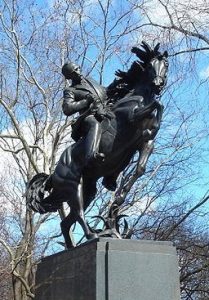
After the Latin American independence wars in 1830, the Spanish Crown still maintained control over Cuba and Puerto Rico in the Caribbean and the Philippine Islands in the Pacific. With the end of slavery, independence inspired Cubans, including a few from the planter class. José Martí, a Cuban intellectual and poet, organized funds and support in the United States for a new push to liberate his homeland, and a new rebellion began in 1895. Martí died in his first battle, but the independence army continued with guerrilla tactics in their fight against the Spanish. The Spanish set up concentration camps (reconcentrados in Spanish) for non-combatants, assuming that anyone who did not submit was an independence sympathizer. In part inspired by similar forced relocations of indigenous peoples in the United States, Canada, and the Spanish Empire in the Americas, reconcentrados were quickly established across the revolting lands of the empire, including in Cuba and the Philippines. Thousands died in terrible conditions in these camps, including from torture, disease, and starvation. Although U.S. officials rejected their usage in Cuba at first, as they continued to fight in the Philippines, the Americans employed the use of reconcentrados there as well in a desperate and brutal attempt to wrench control from nascent Filipino nationalism. Virtually simultaneously, the British established the first concentration camps for the Boer population from 1900 through 1902. Just two years later, the German Empire employed very similar concentration camps during the genocide of the Herero and Nama people in German Southwest Africa (now Namibia) between 1904 and 1908. “Concentration camps”—which could be subdivided into later overlapping categories of immigrant detention camps, ethnic-minority detention camps, prison-labor camps, political prisoner camps, and death camps—thus originated, in the modern sense of the term, during the Spanish-American War.
Major newspapers soon engaged in sensationalist reporting on Spain’s crimes in Cuba in order to increase circulation. Media magnates William Randolph Hearst and Joseph Pulitzer used what became known as “yellow journalism” to agitate for war, especially advocating for the spread of American imperial rule in Cuba. “Yellow journalism” was named after a popular cartoon character, “Yellow Kid,” and was the technique of using inflammatory headlines backed by little or no factual reporting to stir up public emotion, a combination of click-bait and fake news that are common on the internet today. It’s perhaps ironic that Pulitzer is now best known for the prize for journalistic excellence he established in his will.
At the beginning of 1898, public opinion in the U.S. was divided over entering the Cuban war for independence. Still, the McKinley administration was alarmed enough about instability on the island that it sent the battleship Maine to Havana in order to protect U.S. interests. These were plentiful: U.S. investors and buyers controlled the all-important sugar industry, they built and owned much of the communications and transportation infrastructure, and U.S. smokers were the main consumers of Cuban cigars. The Maine mysteriously blew up in Havana Harbor, killing scores of U.S. soldiers. The Spanish were immediately blamed by the sensationalist U.S. press (decades later, investigations showed that the explosion came from the inside and was an accident; the munitions room was located alongside the engine room). President McKinley asked for and the U.S. Congress granted a declaration of war on Spain. The conflict quickly eliminated the Spanish Empire’s control of Cuba and Puerto Rico. Theodore Roosevelt, Secretary of the Navy at the time, formed his own army unit he called the Rough Riders so that he would not miss out on the “splendid little war” in Cuba. However, Black troops from the regular infantry and cavalry—who were known as “Buffalo Soldiers,” having previously served in the so-called Indian Wars—saved him and his men at the Battle of San Juan Hill. Indeed, Buffalo Soldiers were often employed on the front lines of American imperialism, despite facing segregation, racial pogroms, and difficulty securing due pensions after their military service—a pattern that had already existed for Black veterans of the Civil War and would continue for Black veterans throughout the 20th century.
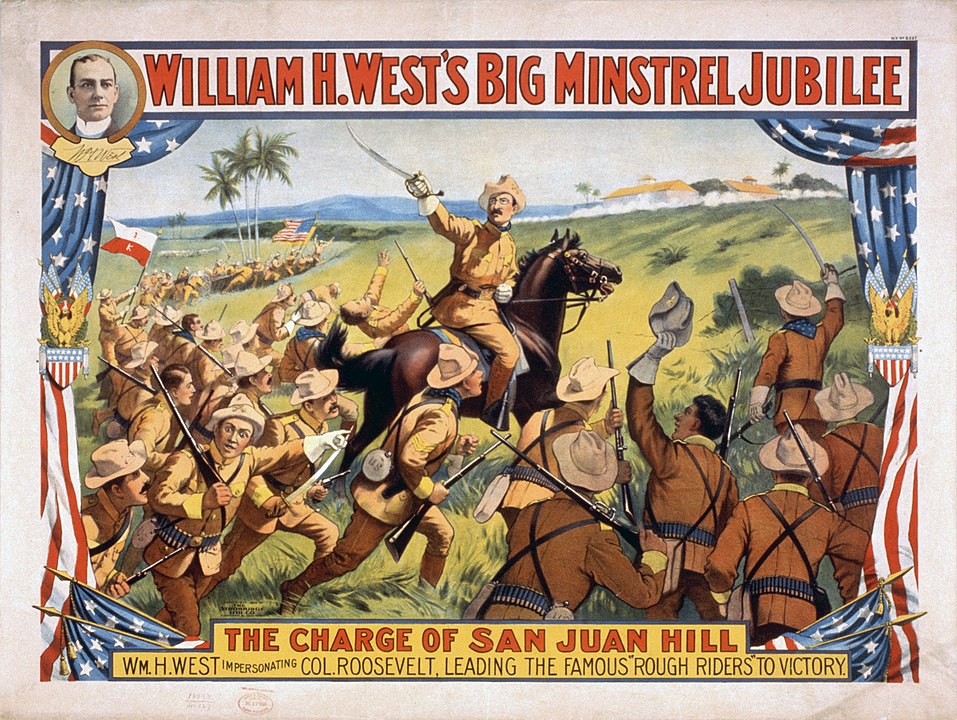
Despite the brutal violence in Cuba and the Philippines, perhaps the most transformational fighting for the U.S. military of the ten-week war occurred at sea. The U.S. Navy sank the Spanish fleet in the Caribbean and in the Philippines, denying any possibility of the arrival of reinforcements and war materiel from Spain. The U.S. landing forces in Cuba, Puerto Rico, and the Philippines were also led by Marines, a strategic pattern that held for the U.S. military throughout the 20th century. At the end of 1898, the Spanish Crown agreed to Cuban independence and handed over Puerto Rico, Guam, and the Philippines to the U.S. “Cuba libre!” (Free Cuba!) was shouted for years by Cuban nationalists. Appropriately, it became the name for the classic bar drink “rum-and-coke” in Spanish-speaking countries: the combination of U.S. Coca-Cola and Cuban rum. However, Cuba was far from “free” after the war, since the U.S. government demanded the right to intercede in the internal affairs of the island for any reason. The infamous “Platt Amendment” was forced into the constitution of the new Cuban republic, and U.S. Marines were indeed sent in periodically to change governments or put down rebellions, real or imagined. U.S. investors were particularly leery of increased Afro-Cuban participation in politics, projecting their own racism onto the affairs of the island.
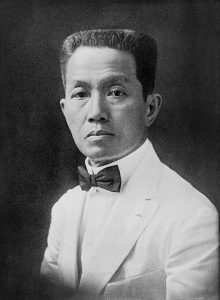
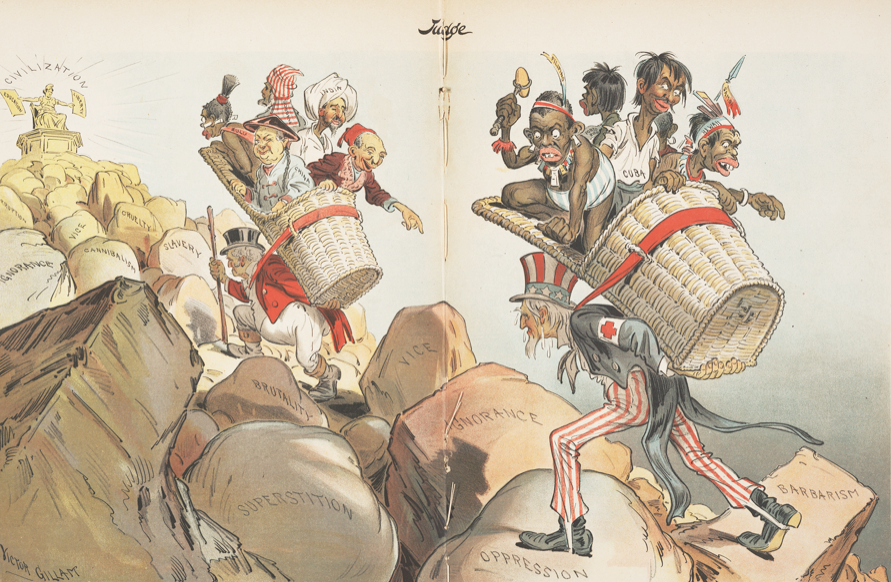
During the Spanish-American War, the U.S. also annexed Puerto Rico and Guam, which are still U.S. territories, as well as the Philippines, which only gained full independence in 1945. Filipinos had already been fighting a war for independence since 1892, so they objected to becoming a possession of the U.S. Emilio Aguinaldo, the patriotic Filipino leader, had been promised by U.S. officials that the American government would recognize the independence of the Philippine Republic, but when the time came, President McKinley issued a proclamation of “benevolent assimilation.” Rudyard Kipling’s famous 1899 poem “The White Man’s Burden” was written in support of the U.S. effort to subdue the people of the Philippines, who they portrayed as ungrateful, extremely dark-skinned, and terribly uncivilized, directly paralleling American racialization of the peoples of Africa and African Americans alike. The U.S. Navy destroyed the city of Iloilo to suppress the independence movement, and Aguinaldo called for a strategy of guerrilla warfare. While 4,200 American soldiers were killed in the conflict—most died from their wounds and infectious disease—by comparison, around 250,000 Filipinos or more died in the conflict, with an enormous number of deaths resulting from a pattern of violence that could only be described as genocidal, including the use of torture and intentionally targeting civilian populations with violence. Because of the logic of white supremacy, some American military leaders argued that “it may be necessary to kill half of the Filipinos” in their effort to “civilize” the islands. General Smith, for instance, argued that any Filipino over the age of 10 was acceptable to execute. The open goal was to eradicate anyone old enough to have been born before the period of potential American influence. It was an effort to eradicate Filipino culture. In 1901, Aguinaldo was captured and forced to surrender. Resistance continued until 1913, but by 1902, most of the guerrillas had been pushed away from major cities. The Philippines finally achieved independence in 1946, after World War II, which included a brief wartime occupation by Imperial Japan. Notably, during the Japanese occupation, nationalists such as Aguinaldo were quite sympathetic to Japanese ideas of creating Pan-Asian unity and even worked with Japanese forces to deftly deliver their first rapid victories against the Americans on the islands.
Another outcome of the Spanish-American War was to eventually highlight the importance for imperialists of the construction of a canal—potentially in Nicaragua, but eventually in Panamá—to connect Atlantic and Pacific shipping routes.
The U.S. Pacific fleet, after defeating the Spanish in the Philippines, had to sail around South America to engage Spain in the Caribbean. The California Gold Rush had brought the Colombian province of Panamá to the attention of investors. Steamships from East Coast ports brought passengers to Panamá, who, by 1855, could take a U.S.-built and -owned railway to the Pacific side, embarking onto other steamers for the trip up to California. In 1902, the U.S. government bought the French canal company’s land for $40 million. Although the French project managed to do some of the most difficult digging, they had abandoned the project several years earlier. Ferdinand De Lesseps had planned a sea-level canal, like the Suez in Egypt, but the hilly topography made locks more practical, while the tropical jungles meant malaria for canal workers.
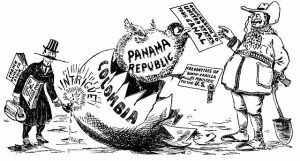
Colombia was ending yet another civil war in 1902, and although the Colombian government signed a treaty handing over a canal zone and other rights to the U.S., the Colombian senate hesitated to approve the agreement. Panamanians were upset at the delay, and it did not take much for the U.S. to help engineer the independence of Panama, sending a naval destroyer to discourage the Colombian government from sending troops. Almost immediately, the new government of Panama signed the Canal Zone over to the U.S. The Canal, opened in 1914, was an impressive engineering feat, shortening the trip for cargo between the oceans. The U.S. medical service, with the help of Cuban researchers, also made the connection between mosquitoes and malaria and was able to check the spread of both while building the canal. The U.S. withdrew from the Canal Zone and the canal became Panamanian property on December 31, 1999. The canal was expanded in 2016 to accommodate Panamax container ships, and currently, about 13,000 ships pass through the canal annually carrying over 330 million tons of cargo.
Questions for Discussion
- How did “fake news” contribute to history in the early 20th century?
- Can the United States’ approach to regions like the Philippines and Panama be considered a new expression of Manifest Destiny?
Bananas began as a major Central American industry when a Cape Cod sea captain named Lorenzo Dow Baker bought 160 bunches in Jamaica in 1870 and resold them in Jersey City. The delicious fruit quickly caught on with U.S. consumers. In 1873, Minor C. Keith began planting banana trees alongside his railroad in Costa Rica. The government had defaulted on some payments to Keith but instead gave him 800,000 acres of tax-free land along the rail line. When the railroad failed to pay for itself in the 1890s, Keith concentrated on bananas. He merged with Baker’s Boston Fruit Company, which was growing bananas on about 10,000 acres in Jamaica. The United Fruit Company was the result, established in 1899. U.F.C. quickly bought up several competitors and gained control of 80% of the bananas reaching the U.S.
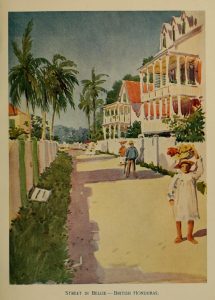
In 1901, American author O. Henry coined the term “banana republic” in his book Cabbages and Kings, inspired by a visit to Honduras in 1897. His point was that companies like U.F.C. didn’t limit themselves to bananas. In 1900, the company began a travel service to Central America on its steamers and produced an illustrated travel guide called The Golden Caribbean. In 1901, the government of Guatemala contracted with U.F.C. to run the nation’s postal service. In 1913, U.F.C. created the Tropical Radio and Telegraph Company, and by 1930, U.F.C. was worth over $200 million and was the largest employer in Central America. The company owned over 3.5 million acres of land, making it the largest landowner in Guatemala. In 1928, when a strike at U.F.C. plantations in Colombia was portrayed by the company as a potential communist insurrection, the U.S. Marines threatened to invade Colombia if the government did not defend U.F.C. Colombian soldiers massacred workers striking for an 8-hour day and a six-day work week. Hundreds were killed, including dozens gathered in a town plaza in support of the strike. This 1928 Banana Massacre was described by Gabriel García Márquez in his 1967 novel One Hundred Years of Solitude. The pattern repeated itself again and again across the region, in Haiti, the Dominican Republic, Nicaragua, and Cuba. Any pro-labor sentiment was painted as signs of an international communist plot, and the U.S. Marines were sent in as an expeditionary force to back the rise of local military strongmen. Sometimes, the massacres were even conducted by U.S. troops directly.
In 1933, Sam Zemurray (founder of the rival Cuyamel Fruit Company) acquired U.F.C. in a hostile takeover. Zemurray had gotten into the business in 1895 by buying overripe bananas from U.F.C. and selling them cheaply in New Orleans. In 1910, Zemurray bought 15,000 acres in Honduras, and the following year, he conspired with a former president of Honduras and an American mercenary general to depose the elected government and install a military regime friendlier to foreign business, especially his. Zemurray had objected to a deal made by the previous government that had granted U.F.C. a monopoly on Honduran bananas in exchange for U.F.C. brokering U.S. government loans to Honduras. The general who led the coup became commander of the Honduran Army and was later appointed U.S. Consul to Honduras.
In 1934, members of the banana workers union in Costa Rica began a national strike that spread to thirty other unions. U.F.C. tried to divide workers and their salaries based on professional or ethnic differences and even deported foreign workers. The unions and U.F.C. came to an agreement after about a month, but U.F.C. did not follow through on its agreements. Instead, the company began a public relations campaign depicting the unions as communist revolutionaries, with the backing of Costa Rica’s government. When the union went back on strike, its leaders were arrested.
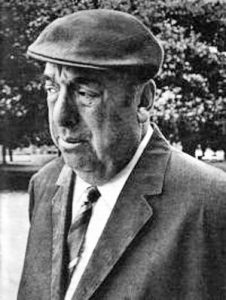
These interventions by U.S. banana companies in the internal affairs of the “banana republics” mimicked the U.S. Marine occupations of several other countries in the Caribbean. The oppressive economic policies of the American companies sparked unrest and instability in the region, which in turn was portrayed as a threat to shipping lanes as well as the building and maintenance of the Panamá Canal. Thus, between 1903 and 1933, the U.S. government sent troops to quell disorders in Nicaragua, the Dominican Republic, Cuba, and Haiti. By the end of the period, the Marines had trained national police forces, whose leaders then took over their own governments. In Cuba, the Batista dictatorship lasted until the 1959 Revolution, the Trujillo dictatorship lasted until 1960 in the Dominican Republic, while the Somoza family ruled Nicaragua until 1979. Some histories have tried to argue that Marines also introduced baseball to Cuba, Nicaragua, and the Dominican Republic, on a lighter note. However, baseball was actually introduced to Cuba in 1864 by students returning from the U.S., and the first Cuban baseball league was already established in 1878. In Nicaragua, baseball was introduced by American businessmen in the 1880s, and in the Dominican Republic, baseball was actually introduced by Cubans fleeing the Ten Years’ War (an unsuccessful attempt at Cuban independence between 1868 and 1878) in the 1870s. Hence, while Marines likely played a role in popularizing the sport, the idea that they introduced it is nothing more than a historical myth that was constructed in the process of attempting to justify American imperialism. Similar reconstructions of the recent past were a common feature of imperialist societies, however, and appeared just as often during the “European ‘Scramble for Africa’” as they did in the attempt to justify American imperialism in Latin America.
Questions for Discussion
- Why did U.S. corporations feel they could do what they pleased in Latin America and the Caribbean?
The European “Scramble for Africa”
The European “Scramble for Africa” at the end of the 19th century was motivated by international rivalry and by the fact that Africa south of the Sahara remained the last part of the world “unexplored” by Europeans. The British, French, Dutch, American, Ottoman, German, Portuguese, Austro-Hungarian, and Spanish Empires had divvied up as much as they could of Asia, including massive British holdings in South Asia; French, Dutch, American, and British colonial possessions in Southeast Asia; and the Treaty Port System established in Qing China, coupled with other ports that were European or American controlled sprinkled throughout the region. The powers of Europe and the United States were virtually unchecked, except by the expansion of the Japanese Empire in the North Pacific. The rivalries among the Europeans were based on the desire to create captive consumer markets for their manufactures and to secure resources like copper, tin, cotton, rubber, palm oil, tea, cocoa, and coffee, upon which their industries depended.

After the British began enforcing an end to the Atlantic slave trade in 1808, European contact with most of sub-Saharan Africa consisted of trade for ivory and other goods at a handful of trading posts. Belgian King Leopold and the new German Empire began their participation in the scramble in the 1870s, sending explorers to claim African territory, much like the Spanish in the Americas 350 years before. The Portuguese in Africa defended their preexisting arrangements, while the British and French Empires began to rush into conflicts to expand their holdings on the continent. Europeans continued a strategy wherein they made agreements with local royalty or political leaders and went to war with others, always seeking a pledge of loyalty to their particular empire.

To bring order to the “scramble,” German Chancellor Otto von Bismarck in 1884 organized a conference to delineate claims. The Berlin Conference was attended by representatives from 12 European powers, the Ottomans (who had holdings in Europe, Southwest Asia, and Northern Africa), plus the United States. No African countries were represented except for the Ottoman provinces along the Mediterranean, which was significant, since Ottoman Libya and Ottoman Egypt would be lost to European influence in the wake of the conference. By 1895, the only independent African states were Morocco, Liberia (which had been founded with the support of the United States as a haven for “returned” free-folk who were previously enslaved in the U.S.), the Ethiopian Empire, and the Somali sultanates of Hobyo and Majeerteen (now in Puntland, Somalia). Administrative boundaries deliberately cut across existing political and ethnic boundaries, in some cases forcing warring groups to live and work together, in others dividing tribes and their allies, especially along the borders of French, Portuguese, British, German, and Belgian claims. This weakened resistance in the short run but, as will be examined in a later chapter, became a source of civil unrest, separatist movements, and boundary disputes among the new African countries formed in the 1950s and 1960s.
Along with the usual proposal of “civilizing” the non-European peoples of their empires, the imperialists also claimed that they were committed to ending the internal slave trade. However, European treatment of African laborers often included whipping, torture, and other punishments, alongside debt peonage. It was standard practice in the so-called Congo Free State (in reality, the personal fiefdom of King Leopold of Belgium) to cut off the hands of African workers who did not meet their rubber collection quotas. The international outcry over such practices forced the Belgian government to finally take over Leopold’s holdings in 1908, after thirty years of brutal rule, totaling roughly 10 million dead, representing approximately one-tenth of the population of the continent of Africa as a whole around the same time. However, even with the direct rule of King Leopold removed, the Belgian Congo was not free. Instead, it was divided among Belgian government, missionary, and private-company (especially rubber) interests, with missionaries intending to erase any aspect of African culture present among the indigenous population, while private-company and government interests combined to continue to exploit Congolese labor. Furthermore, when Congolese nationalists finally were successful in their assertions of independence in the 1960s, they were met with American intervention during the Congo Crisis, which resulted in the rise of American-backed authoritarian dictator Joseph-Desire Mobutu.
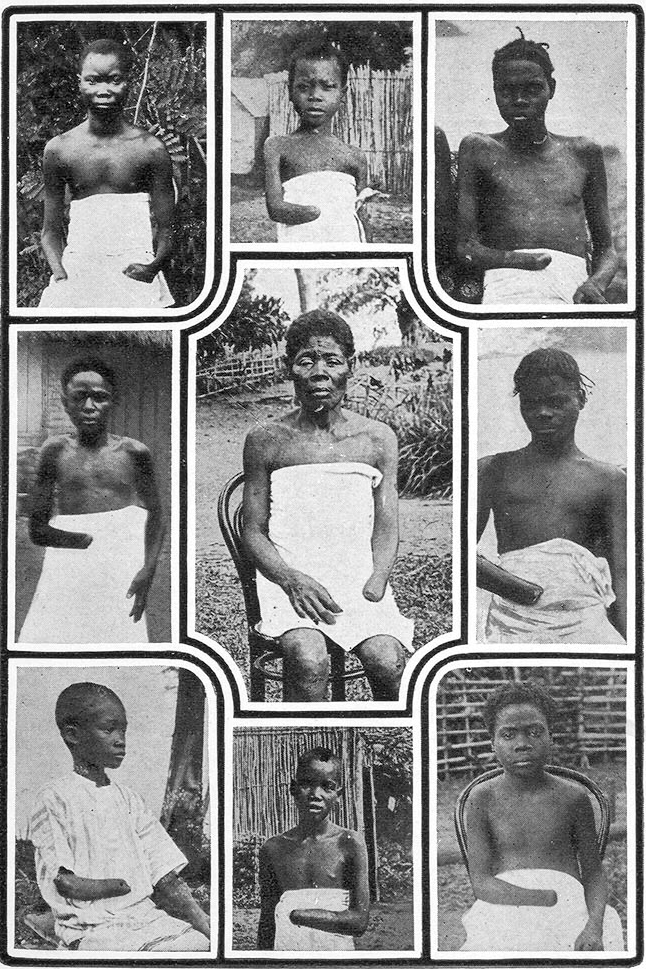
While the Belgian Congo was distinct from typical European models of colonialism—such as the French or British—in that the Belgian Congo was a model of direct colonial rule, South Africa was a particularly unique case of European imperialism, in some ways more similar to the United States, Canada, or New Zealand. In other words, it was a model of “settler colonialism,” where populations from the imperial core were exported to colonize a land for economic gain while removing any sign of indigenous precursors to their control. Similar to the State of New York, Dutch settler colonialism would be a precursor to British settler colonialism in South Africa. Indeed, the Dutch made South Africa into a “settler colony” beginning in the mid-1600s rather than merely establishing a trading post. They were interested in forming a community of farmers that could supply the fleets rounding the Cape of Good Hope on their way to the Dutch East Indies, especially the port of Batavia, which had been established on the island of Java (now a neighborhood in Jakarta, the capital of Indonesia). Thousands of Dutch and other Europeans were attracted by the relatively cooler climate and plentiful arable land of southern Africa, and like the British and the United States in North America, they were more interested in removing the indigenous population than subjugating them.
The British took control of the territory from the Dutch during the Napoleonic period. In the 1830s, the imperial government began abolishing slavery and requiring English in schools and in legal transactions. In reaction, many Dutch settlers moved farther inland in the “Great Trek,” taking more land from the indigenous Africans and establishing two republics, Transvaal and the Orange Free State. At the same time, the descendants of unions between Europeans, Africans, and natives of the Dutch East Indies brought in as laborers (collectively known as “coloured”) occasionally established their own autonomous regions.
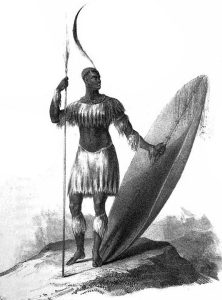
The British also faced the Zulus, who, led by their extraordinary leader Shaka Zulu and his well-trained army, had established an independent kingdom in eastern South Africa in the 1820s. When local British commanders decided to attack a growing military threat from the Zulus in 1879, the imperial regiments were defeated by Zulu troops in a series of major battles. A second invasion of Zululand was successful, but the British continued to recognize Zulu autonomy in much of their territory.
The descendants of the Dutch settlers called themselves “Boers” (the Dutch word for “farmer”) and successfully repelled a British invasion in 1881. They were defeated in the Second Boer War (1899–1902) after a bloody conflict that included a wide guerrilla war and concentration camps for Boer civilians. A young Winston Churchill, the future prime minister of Great Britain, went to South Africa as a journalist to report on the war and instead was captured by the Boers. Churchill escaped, and his story of heroism helped launch his career in British politics. The Germans, who held territory bordering South Africa, supported the Boers in the conflict, adding to the accumulating disagreements between the governments of Great Britain and Germany—and the related branches of the German and British royalty—on the eve of World War I.
Soon after, in 1910, the British organized the Union of South Africa, including the Boers as equal citizens, while continuing to deny such equality to the “coloured” and indigenous groups (nearly 85% of the population). This new union was effectively an autonomous dominion within the British Empire, much like Canada.
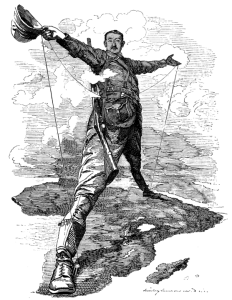
Cecil John Rhodes is now probably most remembered for the scholarship he endowed in his will in 1902, which funds two years of post-graduate study for international students at the University of Oxford. Rhodes Scholars include the former American president Bill Clinton, former president of Pakistan Wasim Sajjad, TV host Rachel Maddow, former Louisiana governor Bobby Jindal, and Kris Kristofferson. Rhodes Scholarships do a lot for the memory of Cecil Rhodes, just as the Nobel Prize does a lot for the memory of Alfred Nobel, the inventor of dynamite whose company operated over 90 munitions factories during his lifetime. However, the award itself was criticized in the 1970s, precisely because among all the recipients from Southern Africa, not a single one had been Black up until petitions forced a consideration of a change. Even still, precisely as a result of the political legacy of Rhodes and other British imperialists in South Africa, the Rhodes Scholarship would not see a Black South African awardee until after the rise of the African National Congress in 1991.
For his part, Rhodes had endowed the scholarship at Oxford simply because the British University was his alma mater. The son of a well-connected Anglican minister, Rhodes joined his brother in 1871 in South Africa at age 18 to recuperate from tuberculosis. He dabbled in farming and then began buying diamond mines. Rhodes returned to England to attend Oxford but left after a year to resume his diamond business, eventually founding the De Beers Company in 1888. A year later, Rhodes controlled 90% of the world’s diamond production. De Beers currently operates in 35 countries and held on to its monopoly until the start of the 21st century. The company still sells about 35% of the world’s diamonds.
During his year at Oxford, Rhodes absorbed the philosophy of imperialism. He attended a lecture by professor John Ruskin that became a famous justification for empire, called “Imperial Duty.” Ruling the world, Ruskin said, “is a destiny now possible to us—the highest ever set before a nation to be accepted or refused.” Rhodes took this idea back to Africa and once declared, “We are the finest race in the world and the more of the world we inhabit the better it is for the human race.” As noted, the British were not the only people who believed themselves to be superior to the people they conquered. Europeans and the Americans also believed it was their job to help “civilize” the rest of the world. The “White Man’s Burden” and the “Civilizing Mission” of imperialism were big themes—we still refer to countries in what was once described as the “third world” as “developing nations,” as if the goal of all the nations in the world is to become like Europe and the United States, who have a responsibility to help them do just that.
Questions for Discussion
- What caused Europeans to believe they could meet in Berlin and divide Africa between themselves?
- Did the actions of Europeans in Africa support the argument that their mission was to “civilize” the African people?
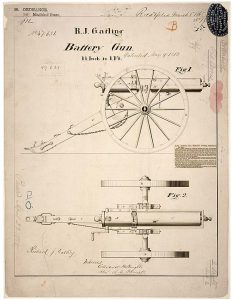
In reality, the superiority the British, French, and Americans had over the people of “less developed” nations was mostly in military technology. Britain demonstrated the effectiveness of armored steamships during the Opium Wars. They sailed up the Yangzi River and threatened the Grand Canal and Beijing, forcing the Qing Chinese Army to surrender and agree to one of several unequal treaties. In the 1870s, the British began using Gatling hand-cranked machine guns against the Zulu in Africa and the Bedouin in the Middle East. The Royal Navy used them against the Egyptians in 1882 during the Urabi Revolt in Egypt. The U.S. used them to support American troops during the Battle of San Juan Hill, when Teddy Roosevelt and his Rough Riders made their famous charge.
Later the British switched to the Maxim gun, which was the first recoil-operated machine gun and was able to fire 600 rounds per minute. They used it in the 1890s to conquer the Ndebele Kingdom in Rhodesia (now Zimbabwe). Cecil Rhodes, who was by this time prime minister of the Cape Colony, had about 750 South Africa Company Police against 80,000 tribal spearmen and 20,000 riflemen. But they had Maxim guns. In one battle, the British used Maxim guns to “fight off” 5,000 attacking Zulu warriors. In 1898, the British were able to kill 20,000 Sudanese warriors with four Maxim guns in a few hours without taking many casualties. This was the beginning of a period of asymmetrical warfare based on technology that continues to the present—and forced people who could not stand up to the imperialists’ superior weapons to find other ways to resist.
In addition to weapons and transportation, Europeans and Americans had the added advantage of communications. Telegraphs using Morse code became widespread in the U.S., Britain, and Europe during the 1850s, but undersea cables were required to connect the colonies. Before telegraphy, a letter from London took about two weeks to reach New York or Alexandria, Egypt; a month to reach Bombay on the west coast of India; six weeks to reach Singapore or Calcutta on the east side of India; two months to get to Shanghai; and ten weeks to arrive in Sidney, Australia. A successful undersea cable line between Britain and the U.S. was completed in 1866, and Britain and India were connected in 1870. Australia was linked to the system in 1872, and a trans-Pacific cable was completed in 1903 linking the U.S. with Hawaii, Guam, and the Philippines. Although telegraphy had been pioneered by Americans like Samuel Morse, the British dominated undersea cable. At the end of the 19th century, Britain owned 24 of the world’s 30 cable-laying ships, and the British owned and operated two-thirds of the world’s cable. During World War I, British telegraph communications were almost completely uninterrupted, while Britain was very successful in cutting German cables, forcing the Germans to rely on wireless (radio) transmissions that were easy to listen to and decipher.
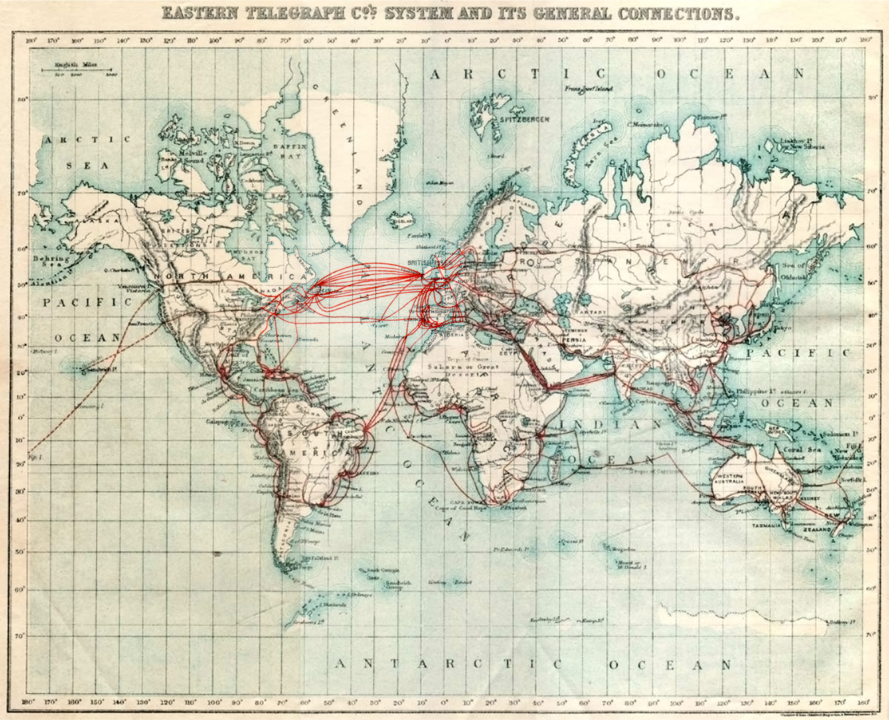
Europeans treated their military success over colonized people as proof of their cultural superiority. They developed theories of scientific racism and social Darwinism to justify their choice to treat conquered peoples as less than fully human. They also took advantage of previous African customs and tribal animosities to divide the conquered Africans or created new ones based on their own prejudices. In Rwanda, the Belgians noted the existence of separate castes that lived side by side for generations under the same rule. However, the Belgians decided to put the cattle-raising Tutsis (10% of the local population) over the Hutu farmers. They reasoned that because of more access to animal protein, the Tutsis seemed taller and better-looking. Thus, Belgian believers of scientific racism deemed them naturally superior to the Hutus. After independence, the Hutus took control and subjected the Tutsis to periodic pogroms. In 1994, nearly a million Tutsis were killed by their neighbors in a government-orchestrated genocide until a largely Tutsi-led guerrilla insurgency took over the government. Both groups speak the same language, and the distinctions fostered by the Belgians have officially disappeared. However, in the aftermath, up to 2 million Hutu refugees fled Rwanda for the Congo, exacerbating the humanitarian crisis and destabilizing Central Africa even further.
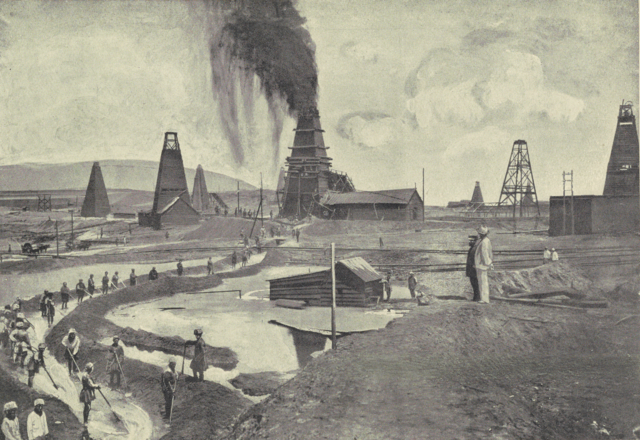
Oil was first drilled by a Russian engineer on the Absheron Peninsula on the west side of the Caspian Sea near Baku, Azerbaijan, in 1848. Edwin Drake’s famous well in Titusville, Pennsylvania, was drilled 11 years later in 1859. Although Russian fields and refineries in Azerbaijan were industry pioneers, the U.S. took an early lead, and by 1880, the Bradford Field in Pennsylvania produced 77% of the world’s oil supply. But by the end of the 19th century, the Russian Empire had taken back the lead in production. By the first decade of the 20th century, commercial oil production was underway in Sumatra, Persia, Peru, Venezuela, and Mexico as well as Texas, California, and Ohio. In the early 20th century, the corporations dominating the global oil business were Standard Oil (later Exxon, est. 1870), the Anglo-Persian Oil Company (later British Petroleum, est. 1909), and Royal Dutch Shell (est. 1907).
Oil initially played a fairly simple role in the Industrial Revolution as a machine lubricant. However, by the late 19th century, internal combustion engines, which relied on firing cylinders using gasoline or heavy oil (diesel) as fuel, were quickly becoming more efficient, replacing steam power in transportation. Diesel-fired ship and train engines, for instance, carried less fuel than needed for coal-fired steam engines, while the gasoline-powered automobile quickly became commonplace by the second decade of the 20th century.
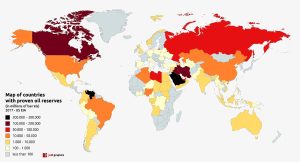
As oil became increasingly central to powering industry and transportation, oil companies became more powerful and were able to project their economic influence to shape the politics of the countries they operated in. This became especially true in the Arabian Peninsula, which until the discovery of oil had been a sparsely populated desert. Today, about 80% of the world’s readily accessible oil reserves are located in the Middle East, while Saudi Arabia, Russia, and the U.S. are the three largest producers.
Questions for Discussion
- How did technology widen the gap between imperial powers and those they conquered?
- How does the division of the world into “developed” and “less-developed” regions influence international relations today?
China and Japan
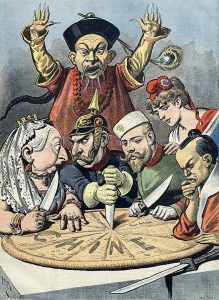
In the 19th century, although the Jurchen (Manchurian) led Qing Empire continued its expansion in the western and southern regions, the weight of external rule on the indigenous Han majority began to reach a breaking point with the Taiping Rebellion. Subsequent internal rebellions of ethnic Miao (related to the Hmong of Southeast Asia) and “Panthays” or Hui Muslims in the south, along with the Dungan Revolt of Hui Muslims in the northwest, combined to weaken Qing rule between 1854 and 1877.
Seizing upon the spread of Qing armies around the edges of their empire and pursuing increased influence in the profitable ports of Qing China, English and French imperialists pitted themselves against the Qing dynasty in the Second Opium War—also known as “the Arrow War”—which began in 1856 and lasted until 1860. Among other concessions, at the end of the Second Opium War, the Qing Empire was forced to sign agreements at the Convention of Peking (now Beijing) that deepened a system of establishing European concessions in Chinese ports. These “Treaty Ports” expanded European zones of control free of tariffs that had been first established after the First Opium War in the 1840s. Furthermore, by the 1890s, China also faced the rapidly industrializing Japanese Empire. In less than thirty years, the Japanese reconstructed their government, initiated industrial activity, and built up their military through conscription and the latest weapons and ship technology. However, the Japanese home islands lacked deposits of key industrial inputs, chiefly coal, iron ore, and oil. To acquire guaranteed resources and markets, the Japanese government began to play the imperial game, following the rules established by the Europeans. Like the British in India and China, Japanese commerce laid claim to their own “sphere of influence” in Chinese territory and claimed sovereignty over tributary states. The brief Sino-Japanese War in 1895 ended with the Qing Empire granting formal control of the Ryukyu Islands to Japan, which had de facto control of the Ryukyu Kingdom since the 17th century, along with Taiwan, which had been previously decisively controlled by the Qing dynasty. Furthermore, the agreement ceded trading rights in Korea and Manchuria to Japan, two regions under increasing Japanese control.
At the end of the 19th century, a final conflict with Western and Japanese imperialist influence would pave the way for radical change and the end of the Qing Empire in China. The Boxer Rebellion (1899–1901) was an anti-colonial, anti-Japanese, anti-Christian revolt led by martial artists who called themselves the Righteous Fists, or “Boxers” by Westerners. The Boxers, believing they were impervious to foreign weapons, marched into Beijing intending to help the imperial government exterminate the foreigners. An eight-nation alliance, which included European nations, the U.S., and Japan, sent 20,000 troops to fight the Boxers. Indeed, although the Boxer Rebellion is often remembered as an “East-West” conflict between “China and the West,” the largest section of the Eight Nation Alliance force was made up of Japanese soldiers. Backed by adept naval brigades, these foreign soldiers freed the legations besieged in the capital, but they also looted Beijing and the surrounding countryside and summarily executed anyone suspected of being a member of the Righteous Fists. The Qing government agreed to pay an indemnity of 450 million taels of silver to the allies (worth about $10 billion today).
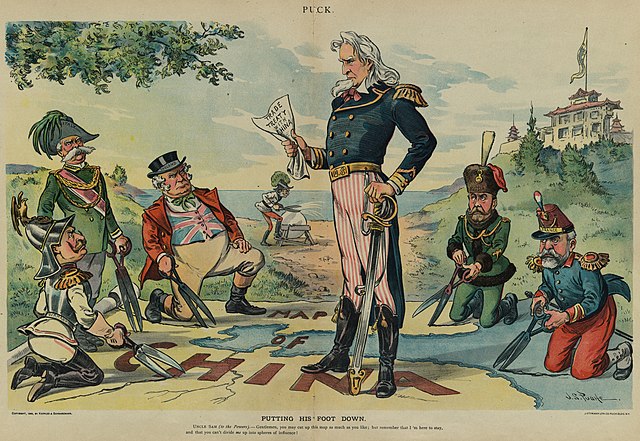
The abject state of the Qing dynasty and the increasing regional power of Japan set the scene for China to become a battlefield for territorial conflicts between Russia, Japan, and the United States. The United States invaded and colonized the Philippine Islands during the Spanish-American War in 1898 and immediately began projecting its own political and commercial power into East and Southeast Asia. Coming late to the imperial contest in Qing imperial China, the United States sought to limit the existing “spheres of influence” and prevent new ones from being imposed by either Russia or Japan. U.S. diplomats advocated an “Open Door Policy,” in which the Qing Empire would not limit any commercial activity by outside powers.
In 1900, Russia occupied Manchuria and came into conflict with Japanese interests on the Korean peninsula, leading to the Russo-Japanese War of 1904–5. After the Japanese navy sank the main battleships of Russia’s Pacific fleet in the Battle of Port Arthur and held off the Russian army, the world realized the power of an organized and industrialized Japan, forcing the Europeans and Americans to consider the Japanese Empire as an equal while showing non-European-colonized peoples that the Europeans were not always invincible in war.
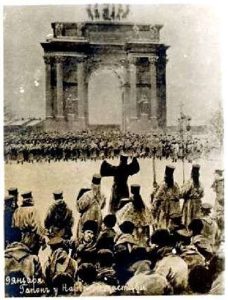
From the Russian side, however, defeat by the Japanese on the battlefield and on the seas not only was humiliating but highlighted the ineffectiveness of the tsarist regime. At the Winter Palace in St. Petersburg in January 1905, a major protest against the inept government ended when the palace guard fired upon the peaceful demonstration, killing hundreds. This “Bloody Sunday” increased demands for reform, including widespread support for a parliamentary monarch. In the meantime, the tsar sent most of the Russian Baltic Fleet to retake Port Arthur from the Japanese. Two-thirds of the ships were sunk by the Japanese Combined Fleet in the Battle of Tsushima in May 1905. In October 1905, Tsar Nicolas II acquiesced to the formation of an elected parliament, the Duma, and the establishment of a constitutional monarchy. However, he soon reneged on granting full oversight powers to this new legislature, preferring to maintain himself as an absolute monarch.
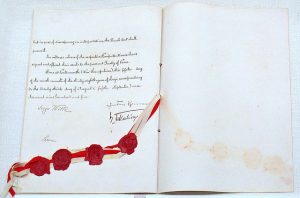
Still, the tsar also agreed to end the unpopular war with Imperial Japan. Peace between the Russians and Japanese was negotiated in Portsmouth, Maine, in the United States, highlighting the increasing importance of U.S. interests in East Asia, while President Theodore Roosevelt was awarded the 1906 Nobel Peace Prize for his role in ending the war—perhaps an irony, given the overall trajectory of Roosevelt’s overtly militaristic and imperialist proclivities when it came to the matter of expanding the American sphere of influence. Japan took over Russia’s “sphere of influence” on China’s Liaotung Peninsula and was recognized as the sole power in Korea, which would then become part of the Japanese Empire in 1910 following a Japanese-Korean treaty that formalized annexation of the peninsula and paved the way for the establishment of an imperialist policy of “Japanization,” bent on the eradication of Korean culture.
The Russo-Japanese War also once again highlighted the extent to which the Qing government in China was hardly considered a factor in international relations. Even though the war concerned Chinese territory, Chinese armies were not seriously involved in the fighting, nor were Chinese negotiators present at the Treaty of Portsmouth. By that time, the Qing Empire was devolving into a series of warlord-controlled regions. Palace intrigues in the royal “Forbidden City” in Beijing had led to effective power being wielded by the Empress Dowager Cixi for nearly five decades until her death in 1908. Although she at times embraced gradual reform of her government and military and periodically protested European and Japanese incursions, she was realistic enough to understand her limits. More conservative forces took over in the palace in 1908, installing the two-year-old Prince Aisin-Gioro Puyi as emperor. In just four years, modern nationalist revolutionaries overthrew the Qing Empire.
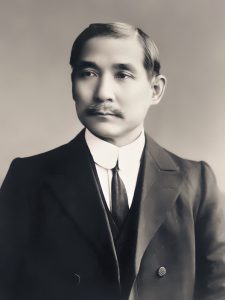
The most popularly renowned leader of the modern nationalists in China was Sun Yat-sen. Born in 1866, he moved to the then independent Kingdom of Hawaii, where an older brother owned a farm, to complete his secondary education at a U.S. missionary school. Sun Yat-sen went on to study medicine in Hong Kong and began advocating for the end of the Qing dynasty and the establishment of a Chinese republic. Because of his opposition to the Qing, he lived mostly in exile in Hawaii, Japan, and British Malaya (now Malaysia), from where he formed the alliance that would end the Qing regime in the Xinhai Revolution in 1911, forcing the emperor to abdicate for the first time in 1912. Emperor Aisin-Gioro Puyi would then be restored briefly to the throne before being forced to abdicate again in 1917. He then spent time attempting to regain power. In 1934, his efforts bore some fruit, and the Japanese Empire installed him as emperor of Manchukuo—the homeland of the Manchurian people, now mostly part of China, with a small portion later ceded to the Soviet Union and subsequently Russia—which had been annexed from the Republic of China and claimed by the Japanese Empire for several decades already. In the wake of World War II, Aisin-Gioro Puyi was tried as a war criminal and sent to a reeducation camp for 10 years after the Tokyo Trials. After his release, he had clearly been changed. He consistently expressed regret for his misrule as emperor of Manchukuo. By 1964, he had been rehabilitated in the People’s Republic of China and became an editor for the Chinese People’s Consultative Conference on a salary of 100 Yuan—or about $300 USD—per month. He died in 1967, celebrated by his closest friends as a reformed and modest man. Yet his example was rare. In the vast majority of cases, imperialist royalty had an even more difficult time giving up their power and suffered because of their refusal to do so in the era of modern nationalism.
Questions for Discussion
- What were the main factors leading to China’s inability to modernize and resist European imperialism?
- What was the role of the United States in Asia in the early 20th century?
Primary Source #1: “The White Man’s Burden: The United States and the Philippine Islands” (1899), by Rudyard Kipling
Send forth the best ye breed—
Go bind your sons to exile
To serve your captives’ need;
To wait in heavy harness
On fluttered folk and wild—
Your new-caught, sullen peoples,
Half devil and half child.
In patience to abide,
To veil the threat of terror
And check the show of pride;
By open speech and simple,
An hundred times made plain.
To seek another’s profit,
And work another’s gain.
The savage wars of peace—
Fill full the mouth of Famine
And bid the sickness cease;
And when your goal is nearest
The end for others sought,
Watch Sloth and heathen Folly
Bring all your hopes to nought.
No tawdry rule of kings,
But toil of serf and sweeper—
The tale of common things.
The ports ye shall not enter,
The roads ye shall not tread,
Go make them with your living,
And mark them with your dead!
And reap his old reward:
The blame of those ye better,
The hate of those ye guard—
The cry of hosts ye humour
(Ah, slowly!) toward the light:—
“Why brought ye us from bondage,
Our loved Egyptian night?”
Ye dare not stoop to less—
Nor call too loud on Freedom
To cloak your weariness;
By all ye cry or whisper,
By all ye leave or do,
The silent, sullen peoples
Shall weigh your Gods and you.
Have done with childish days—
The lightly proffered laurel,
The easy, ungrudged praise.
Comes now, to search your manhood
Through all the thankless years,
Cold-edged with dear-bought wisdom,
The judgment of your peers!
Primary Source #2: Cecil Rhodes, “Confession of Faith,” 1877
It often strikes a man to inquire what is the chief good in life; to one the thought comes that it is a happy marriage, to another great wealth, and as each seizes on his idea, for that he more or less works for the rest of his existence. To myself thinking over the same question the wish came to render myself useful to my country. I then asked myself how could I and after reviewing the various methods I have felt that at the present day we are actually limiting our children and perhaps bringing into the world half the human beings we might owing to the lack of country for them to inhabit that if we had retained America there would at this moment be millions more of English living. I contend that we are the finest race in the world and that the more of the world we inhabit the better it is for the human race. Just fancy those parts that are at present inhabited by the most despicable specimens of human beings what an alteration there would be if they were brought under Anglo-Saxon influence, look again at the extra employment a new country added to our dominions gives. I contend that every acre added to our territory means in the future birth to some more of the English race who otherwise would not be brought into existence. Added to this the absorption of the greater portion of the world under our rule simply means the end of all wars, at this moment had we not lost America I believe we could have stopped the Russian-Turkish war by merely refusing money and supplies. Having these ideas what scheme could we think of to forward this object. I look into history and I read the story of the Jesuits I see what they were able to do in a bad cause and I might say under bad leaders.
At the present day I become a member of the Masonic order I see the wealth and power they possess the influence they hold and I think over their ceremonies and I wonder that a large body of men can devote themselves to what at times appear the most ridiculous and absurd rites without an object and without an end.
The idea gleaming and dancing before ones eyes like a will-of-the-wisp at last frames itself into a plan. Why should we not form a secret society with but one object the furtherance of the British Empire and the bringing of the whole uncivilised world under British rule for the recovery of the United States for the making the Anglo-Saxon race but one Empire. What a dream, but yet it is probable, it is possible. I once heard it argued by a fellow in my own college, I am sorry to own it by an Englishman, that it was good thing for us that we have lost the United States. There are some subjects on which there can be no arguments, and to an Englishman this is one of them, but even from an American’s point of view just picture what they have lost, look at their government, are not the frauds that yearly come before the public view a disgrace to any country and especially their’s which is the finest in the world. Would they have occurred had they remained under English rule great as they have become how infinitely greater they would have been with the softening and elevating influences of English rule, think of those countless 000’s of Englishmen that during the last 100 years would have crossed the Atlantic and settled and populated the United States. Would they have not made without any prejudice a finer country of it than the low class Irish and German emigrants? All this we have lost and that country loses owing to whom? Owing to two or three ignorant pig-headed statesmen of the last century, at their door lies the blame. Do you ever feel mad? do you ever feel murderous. I think I do with those men. I bring facts to prove my assertion. Does an English father when his sons wish to emigrate ever think of suggesting emigration to a country under another flag, never—it would seem a disgrace to suggest such a thing I think that we all think that poverty is better under our own flag than wealth under a foreign one.
Put your mind into another train of thought. Fancy Australia discovered and colonised under the French flag, what would it mean merely several millions of English unborn that at present exist we learn from the past and to form our future. We learn from having lost to cling to what we possess. We know the size of the world we know the total extent. Africa is still lying ready for us it is our duty to take it. It is our duty to seize every opportunity of acquiring more territory and we should keep this one idea steadily before our eyes that more territory simply means more of the Anglo-Saxon race more of the best the most human, most honourable race the world possesses.
To forward such a scheme what a splendid help a secret society would be a society not openly acknowledged but who would work in secret for such an object.
…
Take one more case of the younger son with high thoughts, high aspirations, endowed by nature with all the faculties to make a great man, and with the sole wish in life to serve his Country but he lacks two things the means and the opportunity, ever troubled by a sort of inward deity urging him on to high and noble deeds, he is compelled to pass his time in some occupation which furnishes him with mere existence, he lives unhappily and dies miserably. Such men as these the Society should search out and use for the furtherance of their object.
…
For fear that death might cut me off before the time for attempting its development I leave all my worldly goods in trust to S. G. Shippard and the Secretary for the Colonies at the time of my death to try to form such a Society with such an object.
Media Attributions
- service-pnp-ppmsca-25600-25696v © Keppler, Udo J. is licensed under a Public Domain license
- 2560px-Imperios_Español_y_Portugués_1790.svg © Nagihuin is licensed under a CC BY-SA (Attribution ShareAlike) license
- Descripción de las Yndias Ocidentalis [printed map] © M. Colin (1622) located at Library of Congress Vault Map Collection, Geography and Map Division is licensed under a Public Domain license
- 2880px-OttomanEmpireMain © Chamboz is licensed under a CC BY-SA (Attribution ShareAlike) license
- William_Simpson_-_Charge_of_the_light_cavalry_brigade,_25th_Oct._1854,_under_Major_General_the_Earl_of_Cardigan © William Simpson is licensed under a Public Domain license
- SuezCanal-EO © NASA is licensed under a Public Domain license
- Grigoriy_Myasoyedov_Reading_of_the_1861_Manifesto_1873 © Grigoriy Myasoyedov is licensed under a Public Domain license
- Russia_ethnic © Atlas Général Vidal-Lablache is licensed under a Public Domain license
- Growth_of_Habsburg_territories © Unknown is licensed under a Public Domain license
- 2880px-Austria_Hungary_ethnic.svg © Andrein is licensed under a Public Domain license
- Otto+von+bismarck © Unknown is licensed under a Public Domain license
- Wernerprokla © Anton von Werner is licensed under a Public Domain license
- JaMAC © Unknown is licensed under a Public Domain license
- Canadian_Pacific_System_Railmap © Central Data Bank is licensed under a CC BY (Attribution) license
- LEAD Technologies Inc. V1.01 © J. G. Bartholomew and Sons is licensed under a Public Domain license
- Gandhi suit © Unknown is licensed under a Public Domain license
- US_Slave_Free_1789-1861 © Golbez is licensed under a CC BY (Attribution) license
- Trails_of_Tears_en © Nikater is licensed under a Public Domain license
- Antonio_Lopez_de_Santa_Anna_1852 © Craig H. Roell is licensed under a Public Domain license
- Mexico_1824_(equirectangular_projection) © Giggette is licensed under a CC BY-SA (Attribution ShareAlike) license
- Gauchos_mateando © Unknown is licensed under a Public Domain license
- lossy-page1-2560px-Lei_Áurea_(Golden_Law).tif © Arquivo Nacional is licensed under a Public Domain license
- JoseMartiStatue-CentralParkNY © RyanFreisling is licensed under a Public Domain license
- West_minstrel_jubilee_rough_riders © William H. West is licensed under a Public Domain license
- 2560px-Emilio_Aguinaldo_ca._1919_(Restored) © Harris & Ewing Photo Studio is licensed under a Public Domain license
- _The_White_Man’s_Burden__Judge_1899 © Victor Gillam is licensed under a Public Domain license
- Panama_canal_cartooon_1903 © New York Times is licensed under a Public Domain license
- Street in Belize—British Honduras © H. R. Blaney is licensed under a Public Domain license
- Pablo_Neruda © Revista argentina is licensed under a Public Domain license
- Scramble-for-Africa-1880-1913-v2 © Somebody500 is licensed under a CC BY-SA (Attribution ShareAlike) license
- Kongokonferenz © Adalbert von Rößler is licensed under a Public Domain license
- MutilatedChildrenFromCongo © Alice Harris, Daniel Danielson, others is licensed under a Public Domain license
- KingShaka © James King is licensed under a Public Domain license
- Punch_Rhodes_Colossus © Edward Linley Sambourne is licensed under a Public Domain license
- GatlingGunDrawing © Unknown is licensed under a Public Domain license
- 1901_Eastern_Telegraph_cables © Eastern Telegraph Co is licensed under a Public Domain license
- lossless-page1-2880px-Oil_wells_in_Baku,_Azerbaijan_b10154140_016_tif_t435gf27m.tiff © Philip, James Charles is licensed under a Public Domain license
- 2880px-Map-of-countries-by-proven-oil-reserves-(in-millions-of-barrels)—2017—US-EIA—Jo-Di-graphics © Jo Di Graphics is licensed under a CC BY-SA (Attribution ShareAlike) license
- 2560px-China_imperialism_cartoon © Henri Meyer is licensed under a Public Domain license
- Putting_his_foot_down © J.S. Pughe is licensed under a Public Domain license
- Gapon_crowd_1905 © Unknown is licensed under a Public Domain license
- Japan_Russia_Treaty_of_Peace_5_September_1905 © World Imaging is licensed under a CC BY-SA (Attribution ShareAlike) license
- Sun_Yat_Sen_portrait_2 © K.T. Thompson is licensed under a Public Domain license

